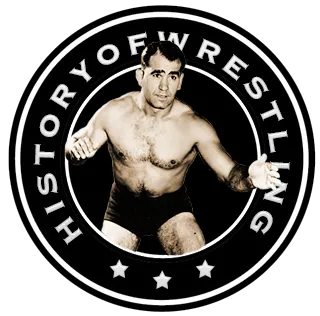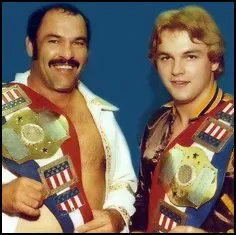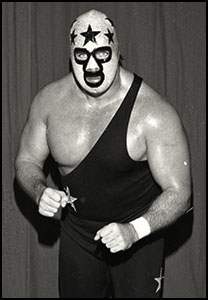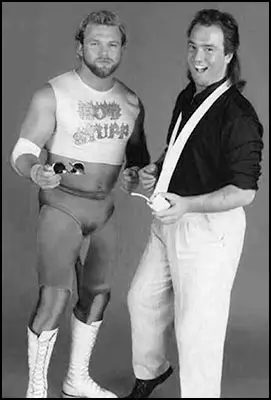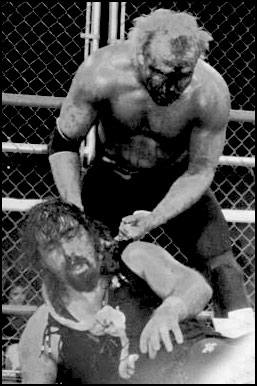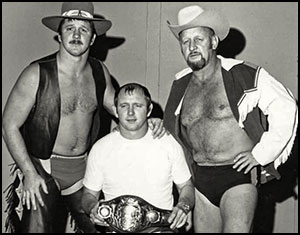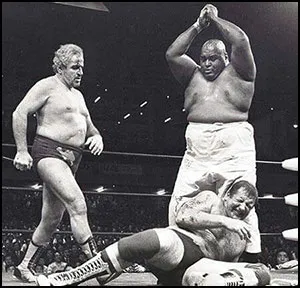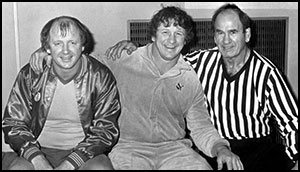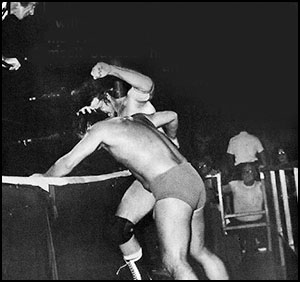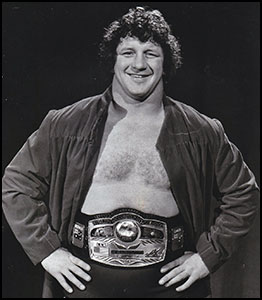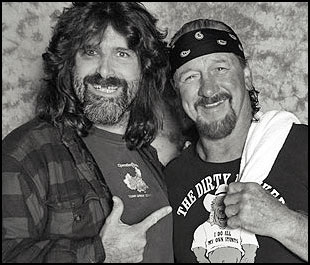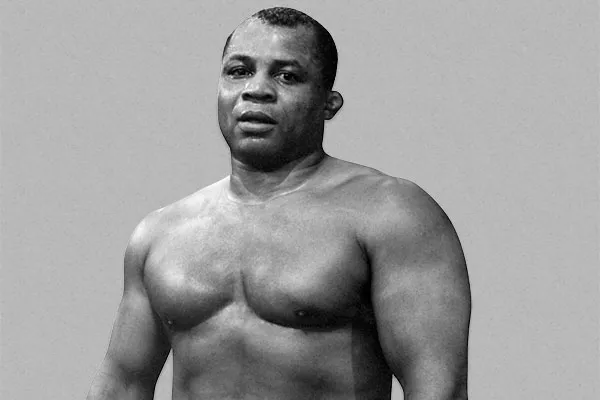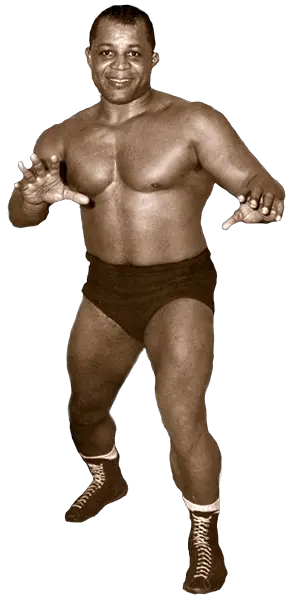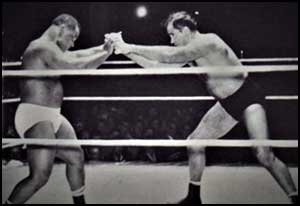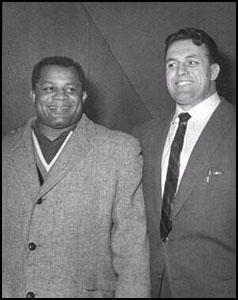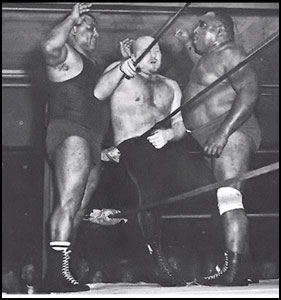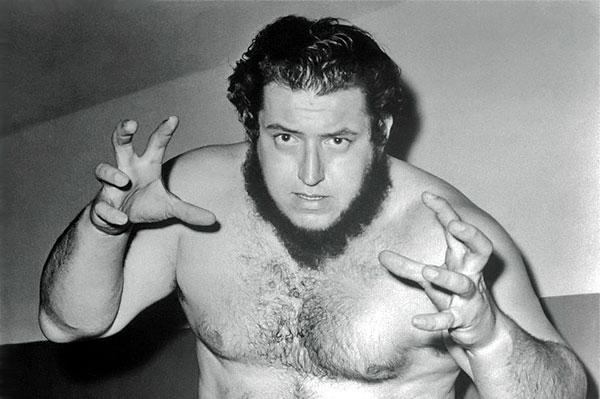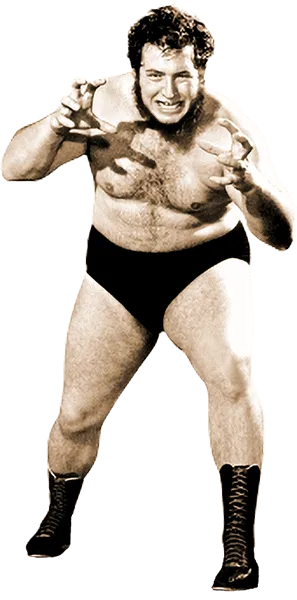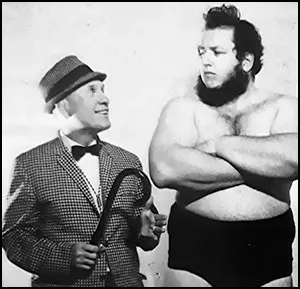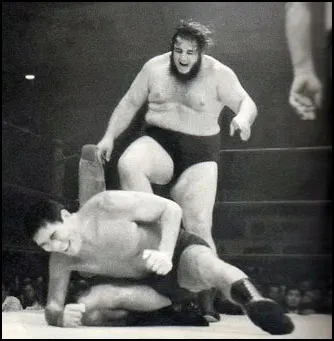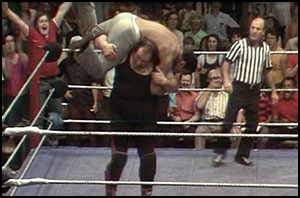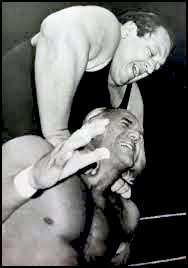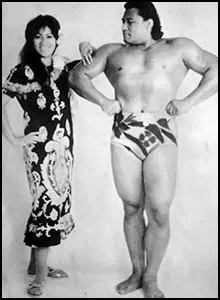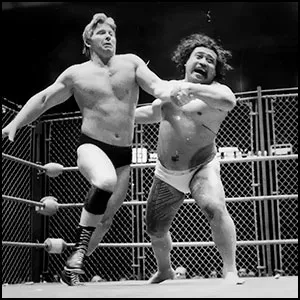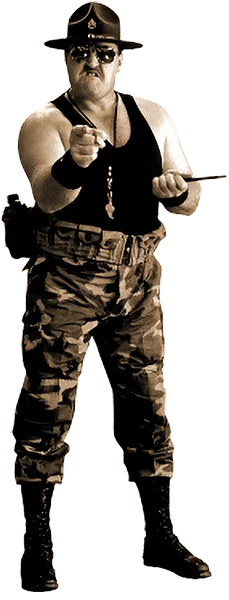ssa
by Stephen Von Slagle
Thomas Edward Gilbert Jr. was born on August 14, 1961 in Lexington, Tennessee, the son of regional favorite Tommy Gilbert. When he began his career as a pro wrestler in 1977, the sixteen year-old originally used the name Tommy Gilbert, Jr. upon his debut in the Memphis territory. Despite his family lineage, the second-generation performer received no special treatment after breaking in and he spent the majority of the early part of his career as a clearly inexperienced, yet potential-filled, babyface enhancement talent. Still, the young, somewhat undersized Gilbert kept “losing” and learning, slowly honing his ring skills and perfecting his craft. Just happy to be a part of the show, the enthusiastic youngster’s heart & determination was evident to anyone watching those early matches, and despite his poor win-loss record, Gilbert (who soon changed his ring-name to Eddie Gilbert) made great strides in the sport for someone so young.
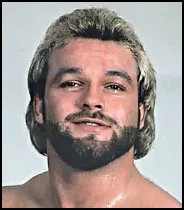 After gaining some much needed experience wrestling in Memphis, the talented young Gilbert made the next logical career step and began teaming with his well-known father, Tommy Gilbert. The father-son combo relocated to Leroy McGuirk’s Tulsa-based NWA Tri-State promotion, and quickly became a main attraction for the small southwestern promotion. On March 3, 1980, The Gilberts captured the NWA United States Tag Team championship, which was later renamed the NWA Tri-State championship, by defeating Steve Lawler and Siegfried Stanke. The popular father-son duo went on to hold the championship belts for nearly four months before being upended by Ron McFarlane & Doug Somers, which began a major program for McGuirk’s Oklahoma promotion. Their “dustbowl” feud continued on and the animosity between the two sides grew exponentially, especially when Tommy and Eddie came back to once again defeat Somers & McFarlane for the Tri-State championship.
After gaining some much needed experience wrestling in Memphis, the talented young Gilbert made the next logical career step and began teaming with his well-known father, Tommy Gilbert. The father-son combo relocated to Leroy McGuirk’s Tulsa-based NWA Tri-State promotion, and quickly became a main attraction for the small southwestern promotion. On March 3, 1980, The Gilberts captured the NWA United States Tag Team championship, which was later renamed the NWA Tri-State championship, by defeating Steve Lawler and Siegfried Stanke. The popular father-son duo went on to hold the championship belts for nearly four months before being upended by Ron McFarlane & Doug Somers, which began a major program for McGuirk’s Oklahoma promotion. Their “dustbowl” feud continued on and the animosity between the two sides grew exponentially, especially when Tommy and Eddie came back to once again defeat Somers & McFarlane for the Tri-State championship.
During this time period, the popular Gilberts also travelled back to the Memphis territory and won the NWA Southern Tag Team title by defeating the hated duo of Killer Karl Krupp & El Mongol in August of 1980. However, after a month and a half at the top of the Memphis tag team scene, The Gilberts were knocked off their throne by the team of Sonny King & The Angel. Two weeks later, though, the father-son team defeated King & The Angel in a rematch to regain the championship belts. Back in the Tri-State territory, when Tommy Gilbert was “injured” as a result of a vicious attack by Somers & McFarlane, The Gilberts were forced to vacate the Tri-State Tag Team title. With his father temporarily out of the picture, Eddie formed a team with another young up-and-comer (and future Hall of Famer) by the name of Ricky Morton and together they defeated McFarlane & Jerry Brown for the Tri-State Tag Team championship on May 16, 1981. Inspired by their success in the Tri-State region, the new, young team also began competing together on the bigger stage of the Memphis circuit, with equally successful results. On August 31, 1981, Gilbert & Morton defeated the dangerous Japanese duo of Fuchi & Onita for the Southern Tag Team title.
The next career move for Gilbert was a tour of the NWA’s Central States territory. While a young wrestler such as Gilbert was certainly not going to get rich working the modest yet rugged Central States circuit, the territory was nevertheless a great place to learn and develop as a wrestler, the hard way. After competing in the Midwestern region as a singles wrestler, Gilbert formed a team with another young second-generation performer, Ricky Romero and together, the agile, youthful team defeated Gilbert’s old rivals from the Tri-State territory, Jerry Brown & Ron McFarlane for the Central States Tag Team championship on January 14, 1982 in Kansas City, Kansas. Following his run in Central States, Gilbert resumed teaming with his father and next up for the Gilberts was a tour of the wild, blood-soaked rings of Puerto Rico’s World Wrestling Council during the summer of 1982. By competing in the unpredictable Puerto Rican wrestling scene, Eddie Gilbert was once again exposed to another new, different and often barbaric style of wrestling, one that would play a role in his career many years later, particularly once he was booking ECW. Along with his father, Eddie captured the WWC North American Tag Team title on June 5, 1982 by defeating the Moondogs in San Juan and the popular American duo enjoyed a fairly lengthy reign as champions, holding the prized belts for nearly three months before losing to the hated Australian duo known as The Fabulous Kangaroos (Don Kent & Johnny Heffernan) in August of 1982.
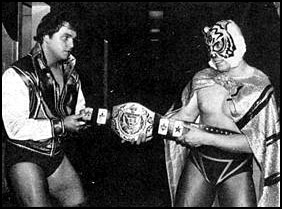 By the Fall of 1982, Eddie Gilbert had accumulated close to five years of professional experience and had made great strides in terms of his ring work, as well as developing his interview skills and bulking up from significantly less than 200 pounds to the much more marketable 220 lb. range. His hard work and dedication finally paid off when he was contacted by the World Wrestling Federation about coming into the WWF as an enhancement talent. Gilbert immediately jumped at the opportunity to work for the legendary Vince McMahon, Sr., and he benefited greatly from the exposure generated by the Federation’s huge audience. Granted, he was usually in the opening bout, and, more often than not, came out on the losing end of the match. But, that wasn’t the point. The young Gilbert, who was barely old enough to legally order a drink in a bar, was clearly improving every time he stepped inside of a WWF ring and, before long, he even began winning some of his matches. Eventually, he received a modest push against the ultra-talented WWF World Junior Heavyweight champion Tiger Mask and the two popular light-heavyweights engaged in an exciting, though brief, feud over the title in 1983. However, following a Federation TV taping in Hamburg, Pennsylvania., Gilbert was involved in a very serious car accident that left him seriously injured. Sadly, it seemed as though the career of one of the business’s most promising young stars might over, just as it was beginning. Yet, amazingly, the determined Gilbert somehow worked himself back into ring shape within several months of the accident. Undaunted, he eventually made his return to WWF programming after several months of being away.
By the Fall of 1982, Eddie Gilbert had accumulated close to five years of professional experience and had made great strides in terms of his ring work, as well as developing his interview skills and bulking up from significantly less than 200 pounds to the much more marketable 220 lb. range. His hard work and dedication finally paid off when he was contacted by the World Wrestling Federation about coming into the WWF as an enhancement talent. Gilbert immediately jumped at the opportunity to work for the legendary Vince McMahon, Sr., and he benefited greatly from the exposure generated by the Federation’s huge audience. Granted, he was usually in the opening bout, and, more often than not, came out on the losing end of the match. But, that wasn’t the point. The young Gilbert, who was barely old enough to legally order a drink in a bar, was clearly improving every time he stepped inside of a WWF ring and, before long, he even began winning some of his matches. Eventually, he received a modest push against the ultra-talented WWF World Junior Heavyweight champion Tiger Mask and the two popular light-heavyweights engaged in an exciting, though brief, feud over the title in 1983. However, following a Federation TV taping in Hamburg, Pennsylvania., Gilbert was involved in a very serious car accident that left him seriously injured. Sadly, it seemed as though the career of one of the business’s most promising young stars might over, just as it was beginning. Yet, amazingly, the determined Gilbert somehow worked himself back into ring shape within several months of the accident. Undaunted, he eventually made his return to WWF programming after several months of being away.
Sensing opportunity, McMahon made the most of a real-life situation, and the master promoter created an angle in which Gilbert, having survived this near tragedy, was brought back to the WWF by his “mentor,” the WWF World Champion Bob Backlund. Despite all he had been through, the admirable young star looked better than ever upon his return, a fact that was noted repeatedly by WWF announcer Vince McMahon, Jr. But when the inspirational youngster came up against the scientific rule breaker known as The Masked Superstar (Bill Eadie), an incident took place that sent shock waves through the WWF fanbase. During a match with Gilbert that took place shortly after Eddie’s return, The Superstar, looking to send a message to Backlund, virtually destroyed the much smaller, far less experienced Gilbert. Time after time, the muscular 275 lb. masked man repeatedly (and deliberately) executed his devastating Neck Breaker on Gilbert. Clearly, The Superstar was trying to eliminate Gilbert from the “sport” by crippling the helpless rookie, who just happened to be the protégé of The Superstar’s chief rival, WWF titleholder Bob Backlund. Gilbert was eventually saved from the onslaught, but not before taking the toll of nearly a half-dozen of the dangerous masked man’s Neck Breakers. Gilbert was carried out of the ring on a stretcher and, with a visibly shaken Backlund by his side, the talented young star was loaded into an ambulance. The series of Superstar-Backlund matches that followed drew several sell-out crowds to Madison Square Garden, however, when Gilbert was carried away by the ambulance, he was also carried out of the WWF’s storylines, never to return.
As a babyface, Gilbert had enjoyed a good deal of popularity, however, despite being well-received by the fans, he was never really able to rise above the lower echelon of workers, at least not as a singles wrestler. But all of that changed in 1984, when Gilbert, who was back wrestling in the Memphis territory, made a shocking (and very effective) heel turn by betraying his tag team partner, former NWA World champion “Wildfire” Tommy Rich. Given the opportunity to truly expand as a performer, Gilbert quickly grew into the new role and emerged, somewhat surprisingly, as one of the most effective young heels in the business. Soon, Eddie Gilbert was being pushed as the territory’s top “bad guy” and wrestling in the main event on cards all across the CWA region. Following his heel turn, he and Rich battled over the CWA International Heavyweight title, with Gilbert capturing his first singles championship by defeating his former friend for the International title on August 27, 1984. Furthermore, following his lengthy, memorable feud with Rich, “Hot Stuff” (as he had now begun calling himself) cemented his newfound status as a main-event level heel when he fulfilled a lifelong dream and engaged in a major feud against his childhood idol, Memphis’ favorite son, Jerry “The King” Lawler.
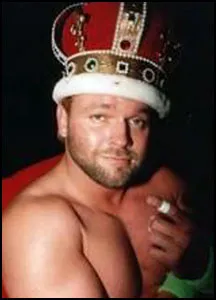 Fresh off of making national headlines by defending the honor of pro wrestling against the disrespectful & egomaniacal “Inter-Gender Heavyweight champion” Andy Kaufman, the “King of Memphis” was at his peek of popularity when he first began a bitter, long-running feud with “Hot Stuff.” Eddie Gilbert, who was managed by Lawler’s longtime arch-nemesis Jimmy “Mouth of the South” Hart, proved to be a genuinely tenacious opponent for The King, as well as an unscrupulous one. After months of trash-talking and sneak attacks, Gilbert finally defeated Lawler on January 27, 1985 to win the region’s top prize, the AWA Southern Heavyweight championship. Although there were many twists and turns along the way, Lawler would go on to regain his Southern Heavyweight title and an even greater degree of revenge when he forced Jimmy Hart to leave Memphis after defeating Gilbert in a special-stipulation match. And, while their battles eventually tapered off, there was no doubt that the Gilbert-Lawler war was far from over.
Fresh off of making national headlines by defending the honor of pro wrestling against the disrespectful & egomaniacal “Inter-Gender Heavyweight champion” Andy Kaufman, the “King of Memphis” was at his peek of popularity when he first began a bitter, long-running feud with “Hot Stuff.” Eddie Gilbert, who was managed by Lawler’s longtime arch-nemesis Jimmy “Mouth of the South” Hart, proved to be a genuinely tenacious opponent for The King, as well as an unscrupulous one. After months of trash-talking and sneak attacks, Gilbert finally defeated Lawler on January 27, 1985 to win the region’s top prize, the AWA Southern Heavyweight championship. Although there were many twists and turns along the way, Lawler would go on to regain his Southern Heavyweight title and an even greater degree of revenge when he forced Jimmy Hart to leave Memphis after defeating Gilbert in a special-stipulation match. And, while their battles eventually tapered off, there was no doubt that the Gilbert-Lawler war was far from over.
Next up for the nomadic Gilbert was to enter the toughest promotion in the country at the time, Bill Watts’ Mid South territory. Although the Mid South region was always known for featuring huge, brawny wrestlers, the cruiserweight-sized Gilbert more than made up for his lack of physical stature through his exemplary ring work and by perfecting the art of delivering a truly captivating, antagonistic interview. He may not have sported the biggest arms in the territory, but he definitely had the biggest mouth, which proved to be an even more valuable asset. Along with The Nightmare, Gilbert captured the prestigious Mid South Tag Team title on November 11, 1985 in New Orleans. However, when his partner left the territory, the brash young Gilbert was allowed to chose a new partner. And, while he made a wise decision in selecting the tough-as-nails Dick Murdoch to replace the Nightmare, Gilbert and his new partner were nevertheless defeated by Ted DiBiase & Steve Williams on December 26, 1985 in Biloxi, Mississippi. Also of note, it was during this time period that, in addition to renewing his singles career, the fast-talking Gilbert also began serving as a manager for several potential-filled young wrestlers, most notably Rock (Ultimate Warrior) & Flash (Sting), who formed the team known as The Blade Runners, as well as former amateur champion Rick Steiner and the Soviet bulldozer, Kortsia Korchenko. When Bill Watts transformed his regional promotion into a national company, what had been known as the Mid South territory was renamed the Universal Wrestling Federation. Naturally, the controversial Eddie Gilbert remained one of the UWF’s top performers and a primary focus of the promotion’s storylines, especially when “Hotstuff” and his men engaged in a bitter main-event feud with UWF owner Bill Watts.
On July 20, 1986 in Tulsa, Oklahoma, Gilbert teamed with Sting (formerly known as Blade Runner Flash) to defeat The Fantastics for the UWF World Tag Team championship, however, even more important to “Hot Stuff” Eddie Gilbert than winning the World Tag Team title, both professionally and personally, was the relationship that he developed during this time period with “The First Lady of the UWF” Missy Hyatt. Although she was still managing “Hollywood” John Tatum, by the time they arrived in the UWF from the World Class promotion, Missy’s personal relationship with Tatum had soured considerably. After meeting and hitting it off with Eddie Gilbert, the two began openly dating each other, despite Hyatt’s continued air-on relationship with her ex-boyfriend John Tatum. Obviously, this behind-the-scenes romantic triangle created an uncomfortable atmosphere for all three parties, so much so that UWF matchmakers decided to turn their real-life situation into a pro wrestling angle. After repeatedly “courting” Missy while she was ringside for Tatum’s matches, Gilbert’s intentions seemed quite clear to everyone, including John Tatum, who naturally took exception. However, in the end, Tatum’s fate was sealed when he was attacked by Gilbert, Sting & Steiner and then blind-sided by Missy’s infamous “loaded” Gucci purse. Lying in a pool of his own blood, Tatum watched helplessly as Hyatt left the ring, arm-in-arm with “Hot Stuff” Eddie Gilbert. After joining forces, Gilbert and Hyatt created “Hot Stuff & Hyatt International,” which was a supposed corporation that represented some of the UWF’s top heel talent. Indeed, with the impressive, young and talented trio of Gilbert, Sting & Rick Steiner as the core of the pseudo-company, H&H International “stockholders” must’ve been very happy investors. Certainly, with the team of Sting & Steiner dominating the tag ranks and Gilbert enjoying a five-month stint as the UWF World TV champion, things were going very well for Gilbert & Hyatt’s consortium.
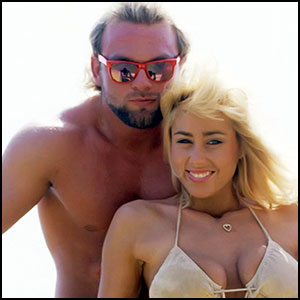 Meanwhile, away from the TV cameras, UWF owner Bill Watts was impressed enough by the innovative young Gilbert to offer him a full-time position as booker for what was, at the time, the third largest promotion in North America. Given the opportunity of a lifetime by Watts, Gilbert did not fail in his goal to accentuate the UWF’s already high-impact style with his cutting-edge and unique brand of storytelling. The result was a television program that was soon widely regarded as the most exciting hour of wrestling on television, with a format and style that was genuinely years ahead of its time. Yet, despite the excitement and high ratings created by the UWF’s product, economic factors in the southwest (the region of the country that was the heart of the promotion) forced Bill Watts to sell his popular upstart company to NWA owner Jim Crockett. While the original idea was for the NWA to keep the UWF operating as a separate entity, in the end, Crockett simply merged the two promotions. As a result, a large portion of Watts’ talent roster was not picked up by Crockett, and (barring a few notable exceptions) the UWF stars that were hired were generally ignored or made to appear inferior to NWA stars.
Meanwhile, away from the TV cameras, UWF owner Bill Watts was impressed enough by the innovative young Gilbert to offer him a full-time position as booker for what was, at the time, the third largest promotion in North America. Given the opportunity of a lifetime by Watts, Gilbert did not fail in his goal to accentuate the UWF’s already high-impact style with his cutting-edge and unique brand of storytelling. The result was a television program that was soon widely regarded as the most exciting hour of wrestling on television, with a format and style that was genuinely years ahead of its time. Yet, despite the excitement and high ratings created by the UWF’s product, economic factors in the southwest (the region of the country that was the heart of the promotion) forced Bill Watts to sell his popular upstart company to NWA owner Jim Crockett. While the original idea was for the NWA to keep the UWF operating as a separate entity, in the end, Crockett simply merged the two promotions. As a result, a large portion of Watts’ talent roster was not picked up by Crockett, and (barring a few notable exceptions) the UWF stars that were hired were generally ignored or made to appear inferior to NWA stars.
Gilbert, who had been a major force behind the UWF’s creative team, was brought into the NWA as an assistant booker. Yet, with so many egos involved, and with head NWA booker Dusty Rhodes’ conflicting approach to storytelling, Gilbert’s tenure on the NWA creative team turned out to be relatively short-lived. After receiving an offer from Jerry Lawler to return to the CWA as an assistant booker in 1988, Gilbert and Hyatt wasted no time in giving the NWA their resignation and returning “home” to Memphis, despite the fact that, professionally speaking, leaving the NWA for the very regional CWA was a marked step down. However, what he lost in exposure and compensation by leaving Crockett’s National Wrestling Alliance, Gilbert gained in personal satisfaction. With CWA co-owner Jerry Lawler proving to be much more receptive to his more outrageous angles than Rhodes had been, Eddie Gilbert truly found a creative atmosphere in which he could experiment and grow as a booker. Of course, upon his return to Memphis, “Hot Stuff” Eddie Gilbert wasted no time in rekindling his bitter feud with Jerry “The King” Lawler. At the same time, his controversial, heat-generating wife Missy Hyatt began co-hosting the promotion’s legendary Saturday morning broadcast with longtime Memphis play-by-play man, Lance Russell. The obnoxious duo of Gilbert & Hyatt immediately became the top heels in the promotion, to say the least, and they soon dominated the promotion’s television show, which had been somewhat lackluster in the months immediately prior to their arrival. Yet, Gilbert & Hyatt did so in a manner that was truly unlike anything that had come before it, and their utter and complete “takeover” of the territory made for some genuinely captivating and very unique programming nearly a decade before the unforeseen success of the somewhat similar NWO takeover of WCW. But, due to the cyclical nature of the Memphis booking office, Gilbert eventually began working less with Lawler and more with the group’s other co-owner (and founder) Jerry Jarrett. The chemistry and free reign he had enjoyed with “The King” did not exist between Gilbert and Jarrett, and soon after they began collaborating on storylines and character ideas, Gilbert felt that he was once again being creatively stifled.
In an example of perfect timing, the increasingly frustrated Gilbert was contacted by David Woods, who had recently purchased the Continental Wrestling Federation from Ron Fuller. While the struggling CWF was unquestionably another step down in terms of television exposure, talent level and pay-offs, Woods offered Gilbert the one thing that no one else could and/or would…a position as the head booker. The creative direction of the C.W.F. would be Eddie Gilbert’s, and he was assured by Woods that he would be allowed to script the storylines as he so desired, with no outside interference or second-guessing by management hindering his efforts. And while the fiscal and creative shape of the dying promotion would’ve been viewed as a negative by most, Gilbert saw opportunity and potential in the floundering territory. So, after dropping a Loser Leaves Town match to Lawler, Gilbert and his wife Missy Hyatt packed up and headed for the CWF’s offices in Dothan, Alabama. Gilbert set about breathing new life into the promotion through his non-traditional storylines, which were carried out by a crew consisting of unproven but talented young performers (and future superstars) such as Paul E. Dangerously, Cactus Jack, Shane Douglas and Lord Humongous (Sid Vicious) as well as established but underutilized veterans like “Pistol” Pez Whatley, Tommy Rich, “Nightmare” Danny Davis and Austin Idol. During his tenure as the C.W.F. booker, Gilbert developed entertaining storylines for the entire crew, not just a few select top stars and as a result, the promotion’s television program and house shows quickly became very well-rounded, consistently exciting events. Gilbert’s ability to provide both spontaneity and continuity within his storylines was a true talent and under his leadership, the small C.W.F. territory soon became one of the most talked about promotions of the day among wrestling enthusiasts.
One particular episode that created major headlines for the C.W.F. came when Gilbert, along with his manager Paul E. Dangerously, physically attacked the teenage son of Pez Whatley when the young man was sitting ringside at a TV taping. The angle came off so effectively, so convincingly, that the fans in attendance very nearly broke out in a riot while trying to protect the youngster from Gilbert and Dangerously’s assault. The incident made local headlines and was picked up by the national wrestling publications, giving the C.W.F. some much needed publicity. But, when a series of disagreements over finances led to the premature end of his tenure as the C.W.F. booker, the talented Gilbert immediately left the promotion and once again landed a spot in the NWA as one of Dusty Rhodes’ booking assistants. Yet, soon after his return to the NWA late in 1988, Gilbert discovered that many of the factors that led to his previous departure remained, particularly the lack of cohesiveness amongst the booking team and the ever-present “back stabbing” nature of certain creative team members.
Forced to return to performing as a babyface (for the first time in nearly five years), Gilbert (and Hyatt) was clearly not as effective as he had been when opposing the “good guys.” Still, he did his best with the role he was given, and due to his natural talent and ability, he made the most of a less than desirable situation. Gilbert was paired with his wife and former UWF protégé “The Dog-Faced Gremlin” Rick Steiner and together they captured the United States Tag Team championship on February 28, 1989 in Columbia, South Carolina. Later in 1989, Gilbert also played a key role in the return of one of the NWA’s greatest stars when he challenged Four Horsemen members Ric Flair and Barry Windham to a match against himself and a “mystery partner.” The cocky Flair confidently accepted “Hot Stuff’s” challenge, and the match was set to take place the following week. However, the NWA World champion never imagined that Gilbert’s partner would turn out to be none other than Flair’s arch rival from years earlier, and the man who would soon defeat “The Nature Boy” for his coveted World title, Ricky “The Dragon” Steamboat. In the meantime, while his on-air role was going reasonably well, Gilbert was once again becoming more and more frustrated with the NWA booking team. Feeling that he had been lied to repeatedly, and frustrated by having idea after idea indiscriminately shot down by other members of the creative team, Gilbert once again gave his notice and left the promotion. However, when he left his job with TBS, Gilbert also left his wife Missy Hyatt, following a steady breakdown in their marriage.
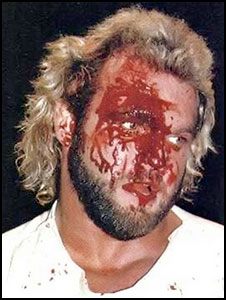 With both his professional and personal life in a state of turmoil, Gilbert regrouped by making a brief return home to Tennessee and the U.S.W.A., where he defeated the young Jeff Jarrett for the U.S.W.A. Heavyweight championship on September 29, 1990. Soon thereafter, Eddie received (and accepted) an offer to come to Dallas and work for the newly formed Global Wrestling Federation as a wrestler and booker. The G.W.F. proved to be a unique challenge, in that it featured daily programming on ESPN, instead of the traditional one episode per week. Of course, this meant that a week’s worth of normal booking duties were quadrupled by the G.W.F.’s accelerated pace. Additionally, as had been the case in the Continental territory, Gilbert was forced to make the most of a G.W.F. roster that consisted primarily of young, unknown talent (including Eddie’s younger brother, Doug Gilbert) and a few forgotten veterans. “Hot Stuff” was up to the challenge, though, and for several months he not only created interesting storylines and match-ups for his men, but also participated as a wrestler in some of the G.W.F.’s most exciting moments.
With both his professional and personal life in a state of turmoil, Gilbert regrouped by making a brief return home to Tennessee and the U.S.W.A., where he defeated the young Jeff Jarrett for the U.S.W.A. Heavyweight championship on September 29, 1990. Soon thereafter, Eddie received (and accepted) an offer to come to Dallas and work for the newly formed Global Wrestling Federation as a wrestler and booker. The G.W.F. proved to be a unique challenge, in that it featured daily programming on ESPN, instead of the traditional one episode per week. Of course, this meant that a week’s worth of normal booking duties were quadrupled by the G.W.F.’s accelerated pace. Additionally, as had been the case in the Continental territory, Gilbert was forced to make the most of a G.W.F. roster that consisted primarily of young, unknown talent (including Eddie’s younger brother, Doug Gilbert) and a few forgotten veterans. “Hot Stuff” was up to the challenge, though, and for several months he not only created interesting storylines and match-ups for his men, but also participated as a wrestler in some of the G.W.F.’s most exciting moments.
In September of 1991, he defeated The Handsome Stranger (Marcus Bagwell) in the finals of a 6-man tournament to crown the Global Wrestling Federation TV champion. Then, in 1992, Gilbert captured the G.W.F. North American Heavyweight title, which was the promotion’s top championship. However, a dispute with management once again led to Gilbert, who was increasingly gaining a reputation as being unreliable and hot-headed, to quit the promotion and return to Memphis. When he left Dallas, Gilbert also took the G.W.F. North American title belt with him. Although the promotion “stripped” him of the championship and held a tournament to decide a new titleholder, upon arriving in the U.S.W.A., Gilbert was billed as the G.W.F. World (not North American) Heavyweight champion. Then, on June 8, 1992 in Memphis, Tennessee., Gilbert put his “GWF World title” on the line against U.S.W.A. champion Jerry Lawler’s belt… and lost. A week later, however, Gilbert defeated “The King” to capture the “unified” championship. It was also during this time period that Eddie was able to get Lawler’s approval to go through with one of his most controversial ideas yet. After choreographing the stunt as best they could, Gilbert and Lawler set their elaborate plan into motion.
During an edition of the live U.S.W.A. TV broadcast, Gilbert got into a very heated disagreement with longtime Memphis promoter Eddie Marlin and their argument continued out into the studio parking lot. After nearly coming to blows, Marlin “fired” Gilbert as Lawler did his best to calm the situation. An irate “Hot Stuff” then got into his car and began to speed out of the parking lot. But, when he started to pass Lawler, Gilbert intentionally swerved into “The King,” clearly going out of his way to hit Lawler. After slamming into his target, Gilbert floored the accelerator and, amongst a cloud of burnt rubber, tore out of the parking lot at top speed. The angle came off as being extremely realistic…mainly because it was. In the heat of the moment, Gilbert had accidentally miscalculated his speed and hit Lawler, full-on, at a much greater velocity than originally intended. So convincing was the angle that police were dispatched to the Memphis TV studio, intent on arresting Gilbert for attempted vehicular manslaughter. Ironically, Lawler, whose hip had been legitimately injured during the spectacular angle, was forced to protect his ‘”enemy” by assuring the police that he was fine, and, eventually, The King convinced the officers not to arrest Gilbert.
But, when Eddie had yet another creative difference of opinion with the U.S.W.A. booking office, rather than work through the problem, Gilbert packed up and left once again. However, having alienated himself from virtually every major promotion in the U.S., Gilbert soon discovered that, despite his great talent, it was getting harder and harder for him to find work. Eventually, he began working occasionally for Joel Goodhart’s Tri-State Wrestling Alliance and had a memorable series of four-star matches against his former employee from the C.W.F. territory, the young wildman known as Cactus Jack. Yet with few options open to him Stateside, Gilbert traveled to Germany in the winter of 1992 to wrestle for Otto Wanz’s Catch Wrestling Association, which was the premier wrestling company in Europe at the time. During his successful tour of the CWA (which lasted a little over six months) Gilbert twice captured the World Middleweight title, first by defeating David “Fit” Finlay in 1992 and then Franz Schumann in 1993.
Back in the U.S., by 1993, Joel Goodhart’s Tri-State promotion had folded, and from its ashes had risen a new promotion, Eastern Championship Wrestling, that carried on in the violent, over-the-top tradition of Goodhart’s pioneering Philadelphia-based T.W.A. Eddie Gilbert was brought in by ECW owner Tod Gordon to book the popular yet fledgling new ‘hardcore” promotion, and he proved to be a perfect match for the small, very controversial and exciting ECW Under the direction of Gilbert, Eastern Championship Wrestling quickly and unquestionably established itself as the bloodiest, most violent and extreme promotion in North America. By comparison to the watered-down WCW and the childish WWF, Gilbert’s Eastern Championship Wrestling, with its heavy emphasis on risqué themes and the promotion’s exorbitant use of profanity, violence & gore, clearly set itself apart as a genuine alternative to the Big Two. On August 7, 1993, Gilbert teamed with The Dark Patriot (his masked brother Doug, using a gimmick from his time in the G.W.F. a few years earlier) to win the ECW Tag Team title, and together they enjoyed a two-month reign as champions. Yet, as was always the case with the temperamental Gilbert, a conflict with management led to his resignation, as well as Gilbert cutting a bitter “shoot” interview on his way out of the promotion.
Following his controversial run in ECW, Eddie once again returned to the U.S.W.A. as a wrestler and a booker, despite the turbulent relationship he’d had in the past with the promotion’s management, specifically U.S.W.A. co-owner Jerry Jarrett. Letting bygones be bygones, Gilbert, Lawler and Jarrett reformed their partnership one last time in 1994. The result was one of the most captivating, intriguing storylines in Memphis wrestling history. By virtue of their lengthy run as bitter onscreen enemies, the Gilbert vs. Lawler feud already had several years of storyline behind it when the seemingly never-ending rivalry was rekindled in 1994. However, this time around, something was different about the character Eddie portrayed. While he remained cocky and out-spoken, “Hot Stuff” was even more intense in his hatred of Jerry Lawler, almost to the point of it becoming an obsession. Gilbert now appeared to be a borderline-psychotic, frothing with jealousy and envy, intent on replacing his childhood hero and assuming his “rightful” place as the new King of Memphis. First, he started out by attacking Lawler’s young son, Brian Christopher, and taking the youngster’s U.S.W.A. Heavyweight championship. In Christopher, Gilbert seemed to look back in time, back to when he was an eager but undersized second-generation performer himself. However, in Lawler’s son, he also saw a vulnerable target, and one more facet of his plan to rid Memphis of The King once and for all. Yet, despite his elaborate, twisted scheme to take out Christopher and then finish off his father, Gilbert fell short, and Lawler remained at the top of the Memphis territory. If the angle was a case of art imitating life, then Gilbert’s premature departure from the U.S.W.A. was surely a case of history repeating itself.
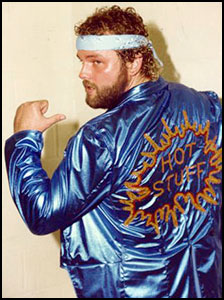 Upon quitting the territory, Gilbert announced that he was retiring from wrestling in order to pursue a new career as a local politician. Of course, as is usually the case in wrestling, Gilbert’s “retirement” did not last long, and he eventually began wrestling again for the U.S.W.A. But, not surprisingly, shortly after his return (which included a brief run as a babyface) he had yet another blow-up with Jarrett and Lawler, and promptly left Memphis to go work in Puerto Rico as an assistant booker and wrestler. During what would turn out to be his last-ever appearance on Memphis television, a bitter and angry Gilbert delivered yet another harsh “shoot” interview on live TV that criticized, to say the least, the USWA and its ownership, namely Lawler and Jarrett.
Upon quitting the territory, Gilbert announced that he was retiring from wrestling in order to pursue a new career as a local politician. Of course, as is usually the case in wrestling, Gilbert’s “retirement” did not last long, and he eventually began wrestling again for the U.S.W.A. But, not surprisingly, shortly after his return (which included a brief run as a babyface) he had yet another blow-up with Jarrett and Lawler, and promptly left Memphis to go work in Puerto Rico as an assistant booker and wrestler. During what would turn out to be his last-ever appearance on Memphis television, a bitter and angry Gilbert delivered yet another harsh “shoot” interview on live TV that criticized, to say the least, the USWA and its ownership, namely Lawler and Jarrett.
In Puerto Rico, Gilbert once again “popped the territory” with his innovative booking style. At the same time, as a wrestler, “Hot Stuff” Eddie Gilbert was as controversial as ever, and his feud with the island fan favorites such as Carlos Colon and Hurricane Castillo were huge moneymakers for the World Wrestling Council. But as always, Gilbert was not committed to the WWC for the long haul, and he left the promotion (this time on friendly terms) after less than a year.
Back in the States, he took part in the newly-revived National Wrestling Alliance’s tournament to crown a new NWA champion. However, other than that and a few other scarce bookings, Gilbert found it more difficult than before to find work. With the U.S.W.A. finally refusing to take him back, and no realistic chance of landing a position with WCW, the WWF or even ECW, Gilbert reached out to the one person who could offer him a full-time position with a major company: Smokey Mountain Wrestling owner and longtime friend Jim Cornette.
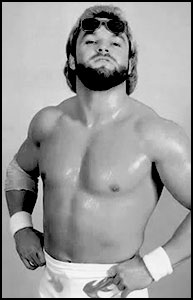
Knowing Gilbert’s talent, but also his volatile personality, Cornette cautiously brought Gilbert in as S.M.W.’s new top heel. Yet, sure enough, Gilbert left Cornette’s promotion without notice after just a single TV taping in order to return to Puerto Rico as the new head booker of the World Wrestling Council. However, shortly after his successful return to Puerto Rico, Eddie Gilbert was unexpectedly, shockingly found dead in his Isle Verde apartment on February 18, 1995, the victim of an apparent heart attack. Yet, his young age (33) and otherwise good health led many within the world of wrestling, especially those who knew him well, to suspect that some sort of drug use also played a role in his untimely death. Whatever the case, the fact remained that Eddie Gilbert, one of the most gifted and inventive young minds in wrestling, was gone, forever.
Eddie Gilbert is a member of the Memphis Wrestling Hall of Fame (1995) and the Hardcore Hall of Fame (2009). Gilbert was also voted Best Booker (1988) by the Wrestling Observer Newsletter and Pro Wrestling Illustrated ranked him #83 in its “Top 500 Wrestlers of the PWI Years” in 2003.
by Stephen Von Slagle
Over the course of professional wrestling’s long history, few men have commanded the kind of instant respect from both the fans and his co-workers as the wildman from the Double-Cross Ranch in Amarillo, Texas, former NWA and ECW World Heavyweight champion Terry Funk. For more than fifty years, the rugged Texan brought both excitement and respect to his chosen profession and influenced countless future wrestlers along the way. A man who was as kind and gentle away from the ring as he was unpredictable and brutal inside of it, Funk was also one of the great teachers in wrestling history. Having trained the likes of Bob Backlund, Stan Hansen, Bruiser Brody, Tito Santana, Ted Dibiase and countless other wrestling legends for their careers in the sport, Terry (along with his older brother and father) undoubtedly helped shape wrestling for decades to come, both in North America and Japan. A former NWA World Heavyweight champion during the mid-Seventies, Terry Funk remained a highly relevant figure in the business for decades after his World title reign ended and he was a constant source of controversy and excitement even into the new millennium. A man who, due to his vast knowledge of the business and an innate ability to read the future trends of pro wrestling long before they actually happened, The Funker was always able to stay a step ahead of everyone else and lead the pack, even in cases where he was decades older than his opponent and/or co-workers. Truly, there have been few individuals as important to the industry as the one and only “Hardcore Legend” Terry Funk.
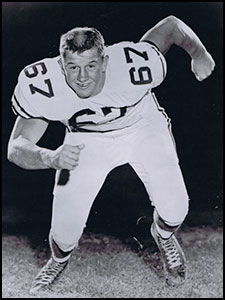 Terry Funk was born on June 30, 1944, in Hammond, Indiana and grew up in the Lone Star State of Texas. Following in the footsteps of his famous father and brother, Funk began his career in pro wrestling after graduating from West Texas State University, where he had excelled at football. The future World champion made his debut in 1965, wrestling for his father’s successful Amarillo promotion. Not surprisingly, given his upbringing, the agile & talented second-generation performer quickly became a top star in the territory. With his youthful good looks, a famous wrestling name and an obvious abundance of talent, the youngest Funk instantly became a popular fan favorite in Amarillo upon his debut and it was not long after breaking into the sport that Funk, along with Ricky Romero, picked up one of his first championships in the form of the NWA Western States Tag Team title. With Romero as his partner, Funk twice won the Western States Tag title, first in 1969 and then again in 1970. In terms of his early singles championships, the youngest Funk won the Texas Brass Knuckles championship in 1972 as well as the NWA Western States title five times between 1970 through 1974.
Terry Funk was born on June 30, 1944, in Hammond, Indiana and grew up in the Lone Star State of Texas. Following in the footsteps of his famous father and brother, Funk began his career in pro wrestling after graduating from West Texas State University, where he had excelled at football. The future World champion made his debut in 1965, wrestling for his father’s successful Amarillo promotion. Not surprisingly, given his upbringing, the agile & talented second-generation performer quickly became a top star in the territory. With his youthful good looks, a famous wrestling name and an obvious abundance of talent, the youngest Funk instantly became a popular fan favorite in Amarillo upon his debut and it was not long after breaking into the sport that Funk, along with Ricky Romero, picked up one of his first championships in the form of the NWA Western States Tag Team title. With Romero as his partner, Funk twice won the Western States Tag title, first in 1969 and then again in 1970. In terms of his early singles championships, the youngest Funk won the Texas Brass Knuckles championship in 1972 as well as the NWA Western States title five times between 1970 through 1974.
But, with his older brother Dory in the middle of enjoying what would become a four-year reign as the NWA World Heavyweight champion, Terry eventually began traveling outside of the Amarillo territory. Although he portrayed the role of a babyface for most of his title reign, as the traveling champion, Dory Funk, Jr. would often have to wrestle babyface contenders while assuming a more heelish role. Oftentimes, Terry (who, once he “turned,” was a natural heel and someone able to evoke a great deal of negativity from his audience) would arrive in a territory a few weeks ahead of his brother and engage in a feud with the top local babyface. After a few heated matches, the fan favorite oftentimes “earned” a shot at the World champion by defeating his younger brother. As a result of all the controversy, wrestling fans of the day would line up to see the big payoff match, with the title on the line. Indeed, it was a very successful formula that was of significant benefit to the still young Terry, who gained a great deal of experience while acting as his brother’s “enforcer.”
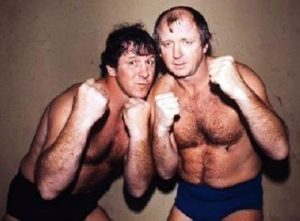 Beginning in the late Sixties (and lasting into the Eighties) the tag team of Dory & Terry Funk was one of the most talented, respected, and oftentimes, hated duos in all of pro wrestling. Their legendary family feud with the Brisco Brothers, Jack & Jerry, was among the most heated and longest running programs in wrestling history.
Beginning in the late Sixties (and lasting into the Eighties) the tag team of Dory & Terry Funk was one of the most talented, respected, and oftentimes, hated duos in all of pro wrestling. Their legendary family feud with the Brisco Brothers, Jack & Jerry, was among the most heated and longest running programs in wrestling history.
The two incredibly talented teams, with one set of brothers hailing from Texas and the other from neighboring Oklahoma, were the living definition of the term “natural rivals” and the hundreds of matches the two wrestled against each other were always characterized by superior mat action and remarkably intense competition. In addition to their legendary feud against the Briscos, the Funk Brothers engaged in several other lengthy, bloody feuds, in both North America and Japan, most notably against Dusty Rhodes & Dick Murdoch, The Invaders and The Sheik & Abdullah the Butcher. Whether they were wrestling in the U.S., Japan, Mexico, Puerto Rico or Canada, the team of The Funks were always at the center of controversy within the tag team ranks and invariably deeply involved in the title picture.
Together, they captured the World Wrestling Council Tag Team championship twice, and held the prestigious Puerto Rican belts for more than two years all total. The Funks also won the World Tag Team title (Amarillo version) twice in 1968, the NWA International Tag Team titles three times between 1971-1973, the Florida Tag Team title in 1971 and Georgia Tag Team championship in 1978.
Dory and Terry also teamed to win the NWA World Tag Team championship (Los Angeles version) and the Southwest Championship Wrestling World Tag team title, both in 1980, as well as the NWA North American Tag Team championship in 1981. Of course, Terry Funk did anything but live in his older brother’s shadow and the youngest member of the famous wrestling family picked up more than his fair share of prestigious singles championships during his early years in the business. During a successful run in Florida (the first of many for Funk) in 1971, he won both the Southern Heavyweight & Florida TV titles. Elsewhere within the NWA territorial structure, Funk captured the Americas Heavyweight (Los Angeles) and the Missouri Heavyweight titles, both in 1973. Another major championship held by Terry Funk (twice, first in 1975 and then again in 1976) was the International Heavyweight title, which eventually became part of All-Japan’s prestigious Triple Crown championship.
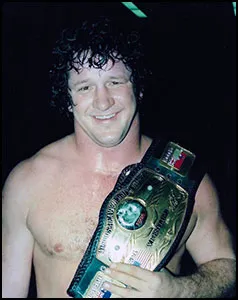 The reason for Funk’s early success was due greatly to his solid grasp of wrestling fundamentals combined with his determination to continue learning and developing as a technical wrestler. While he is deservedly known as one of the greatest brawlers in pro wrestling history, the early portion of Funk’s career also contained a great deal of traditional scientific wrestling. A master of the Spinning Toe Hold, Funk also developed his offensive repertoire to the point where he featured textbook examples of any number of finishing maneuvers, including the Figure Four Leglock, an array of Suplexes and a truly devastating Piledriver. Still, even back during his earliest years in the sport, Funk’s propensity for wild, unpredictable & very realistic brawling was quite evident. However, despite his reputation as being a bit of a maverick, his talent and marketability was too great to ignore and the decision was made by the NWA championship committee to put the World Heavyweight title around the waist of Terry Funk. On December 10, 1975, Funk defeated reigning NWA champion Jack Brisco in Miami, Florida to win the richest prize in pro wrestling. Terry’s World title victory (which came just two and a half years after Dory lost the title) made history in more ways than one, with the Funks being the only brothers to have both worn the NWA World championship belt, establishing the Funk family as a wrestling dynasty unlike any other.
The reason for Funk’s early success was due greatly to his solid grasp of wrestling fundamentals combined with his determination to continue learning and developing as a technical wrestler. While he is deservedly known as one of the greatest brawlers in pro wrestling history, the early portion of Funk’s career also contained a great deal of traditional scientific wrestling. A master of the Spinning Toe Hold, Funk also developed his offensive repertoire to the point where he featured textbook examples of any number of finishing maneuvers, including the Figure Four Leglock, an array of Suplexes and a truly devastating Piledriver. Still, even back during his earliest years in the sport, Funk’s propensity for wild, unpredictable & very realistic brawling was quite evident. However, despite his reputation as being a bit of a maverick, his talent and marketability was too great to ignore and the decision was made by the NWA championship committee to put the World Heavyweight title around the waist of Terry Funk. On December 10, 1975, Funk defeated reigning NWA champion Jack Brisco in Miami, Florida to win the richest prize in pro wrestling. Terry’s World title victory (which came just two and a half years after Dory lost the title) made history in more ways than one, with the Funks being the only brothers to have both worn the NWA World championship belt, establishing the Funk family as a wrestling dynasty unlike any other.
Although he defended his championship against a plethora of top opponents (including major feuds with the likes of Dusty Rhodes, Dick the Bruiser, Harley Race, Jerry Lawler, Giant Baba and many others) in territories across the world, it is probably safe to say that Terry Funk’s primary opponent while champion was also his brother’s archrival, the man Terry won the title from, the ultra-talented amatuer-turned-pro, Jack Brisco. A rivalry as intense as any in the annals of wrestling history, it was not at all uncommon for their heated, emotional battles to run the full sixty minutes allotted for a championship encounter. It was, in fact, uncommon if they didn’t.
For a year and a half, Terry Funk stood atop the wrestling world as the NWA titleholder and in the tradition of previous NWA champions, he defended his gold belt relentlessly in each of the numerous territories in every nation represented by the National Wrestling Alliance offices. But, what goes up must also come down, and every champion’s reign eventually reaches its end, even one as exciting as Terry Funk’s. On February 6, 1977, Harley Race (the same man who, four years earlier, had ended Dory’s reign as champion) defeated Terry Funk for the NWA championship in front of an overflowing crowd at Toronto’s Maple Leaf Gardens. Despite his loss of the World championship, Funk remained a top competitor both at home & overseas (particularly in Japan, were both he and his brother are revered legends) and he was in constant demand by promoters worldwide. Still, as the decade of the Seventies began to end, Terry Funk suddenly started wrestling less and less frequently. Not surprisingly, there was much speculation regarding the former champ’s future in wrestling, or lack thereof. However, his fans would later find out that his conspicuous absence was due to the fact that Funk was beginning to lay the groundwork for a new career as an actor in Hollywood.
In 1978, Terry Funk made his big-screen debut as Frankie the Thumper in Sylvester Stallone’s Paradise Alley. Portraying the role of, you guessed it, a professional wrestler, Funk received unanimously positive reviews of his strong performance in the film. With that in mind, it’s no surprise that in the years following his motion picture debut, the wrestler-turned-actor amassed a very impressive list of credits, both as an actor and a stuntman.
In addition to his featured character in Paradise Alley, Funk starred in another big role opposite Stallone in Over the Top (1987), played an important character in Patrick Swayze’s Road House (1989), as well as Mom Can I Keep Her? (1998) and, of course, Barry Blaustein’s Beyond the Mat (2000). Funk also landed major parts in several television series, including Quantum Leap, Swamp Thing, Tequila & Bonetti, The Adventures of Brisco County, Jr., and Thunder In Paradise.
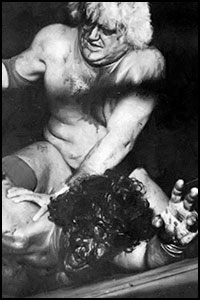
Yet, despite his success in Hollywood, Funk was eventually drawn back to his first love, the wrestling ring. Although he had wrestled dozens of matches since the release of Paradise Alley, Funk’s true return to the wrestling spotlight came on August 21, 1979.That night, prior to an NWA title defense by the newly-crowned champion Dusty Rhodes, Funk stormed the ring and attacked Rhodes, breaking the new champ’s arm. Rhodes refused to pull out of his title defense, though, and as a direct result of the “injury” caused by Funk, “The American Dream” lost his title that night to the former champion, Harley Race, less than seven days after winning it. The sneak attack sent waves of outrage throughout the NWA fanbase and Funk instantly resumed his position as the most hated man in the sport. To add insult to injury, immediately following his attack on Rhodes, The Funker won a tournament to determine the new Florida Heavyweight champion, a title that had been vacated a week earlier by “The American Dream” when Rhodes won the NWA World title. The angle (and, in particular, Funk’s crazed attack on the new champion) has gone down as one of the most effective in wrestling history, yet, in hindsight, it was only the latest chapter in the storied Funk-Rhodes war.
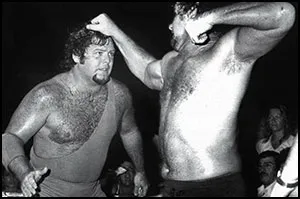 Another legendary feud that Funk participated in was his program against Jerry “The King” Lawler. During the early Eighties, Funk and Lawler tore into each other during a truly barbaric, bloody series of matches that originally began in the Memphis territory, eventually moved to the Florida territory, and then returned back to Memphis. Perhaps the most famous of the many encounters during their long running feud was the one that, ironically enough, nobody saw. Inside of an eerily empty Mid South Coliseum, without a single fan inside of the cavernous 11,500-seat building, Funk and Lawler battled each other in one of the strangest and most creative matches of its time. Once again, Terry Funk was riding on the cutting edge of his profession. It wasn’t the first time, and it certainly wouldn’t be the last.
Another legendary feud that Funk participated in was his program against Jerry “The King” Lawler. During the early Eighties, Funk and Lawler tore into each other during a truly barbaric, bloody series of matches that originally began in the Memphis territory, eventually moved to the Florida territory, and then returned back to Memphis. Perhaps the most famous of the many encounters during their long running feud was the one that, ironically enough, nobody saw. Inside of an eerily empty Mid South Coliseum, without a single fan inside of the cavernous 11,500-seat building, Funk and Lawler battled each other in one of the strangest and most creative matches of its time. Once again, Terry Funk was riding on the cutting edge of his profession. It wasn’t the first time, and it certainly wouldn’t be the last.
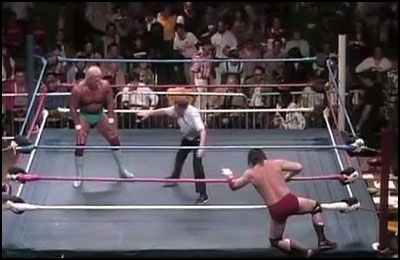 As the decade’s first few years passed, it became clear that the wrestling business was about to undergo a major upheaval that would reverberate across the entire wrestling world, courtesy of the World Wrestling Federation’s ambitious new owner/operator, Vincent K. McMahon. Once McMahon had launched his historic national expansion and the country was gripped by Hulk-a-Mania, Terry Funk was brought into the WWF, specifically to feud with the incredibly popular new champion. Hogan and Funk battled in sold-out WWF arenas throughout the U.S. and Canada and their big showdown on NBC’s Saturday Night’s Main Event posted some of the biggest numbers in the highly-rated series’ history. After his feud against Hogan had run its course, Terry was joined in the WWF by his older brother Dory and, later, their “half-brother” Jimmy Jack Funk (Jesse Barr). The Funk family quickly became a major factor within the WWF’s crowded tag team ranks and, it was during this stay in the WWF that Terry first started bringing his infamous (and, at times, flaming) branding iron to the ring.
As the decade’s first few years passed, it became clear that the wrestling business was about to undergo a major upheaval that would reverberate across the entire wrestling world, courtesy of the World Wrestling Federation’s ambitious new owner/operator, Vincent K. McMahon. Once McMahon had launched his historic national expansion and the country was gripped by Hulk-a-Mania, Terry Funk was brought into the WWF, specifically to feud with the incredibly popular new champion. Hogan and Funk battled in sold-out WWF arenas throughout the U.S. and Canada and their big showdown on NBC’s Saturday Night’s Main Event posted some of the biggest numbers in the highly-rated series’ history. After his feud against Hogan had run its course, Terry was joined in the WWF by his older brother Dory and, later, their “half-brother” Jimmy Jack Funk (Jesse Barr). The Funk family quickly became a major factor within the WWF’s crowded tag team ranks and, it was during this stay in the WWF that Terry first started bringing his infamous (and, at times, flaming) branding iron to the ring.
But, as he began to land more and more parts as a film actor, Funk again began wrestling less frequently and eventually faded from the wrestling scene once again. Indeed, during much of the latter portion of the Eighties, Funk did not wrestle at all. Although he had not made an official announcement, most fans simply assumed that the fortysomething Funk had simply retired again, permanently, this time. But, in 1989, he returned to the wrestling scene via TBS and the NWA, as Funk was brought in to do the color commentary for the NWA’s Music City Showdown pay-per-view, which featured the latest in a long line of classic Ric Flair vs. Rick Steamboat encounters. Following a truly incredible marathon of a match, Flair was able to score a pinfall on the champion Steamboat and “The Nature Boy” regained his coveted World championship. After the match, Funk left his seat at the announcing table and entered the ring to congratulate Flair on his hard-earned victory. The former champion then let it be known that he would also like to be the first to challenge the new champion. But Flair, after noting Funk’s retirement from wrestling and his successful movie career, suggested that Terry could not simply walk back into wrestling and immediately get a shot at the World title. Flair then assured Funk that once he was the NWA’s number one contender, he would be happy to wrestle him. Until then, though, Flair felt that the men already in the Top Ten deserved the first shots at his title.
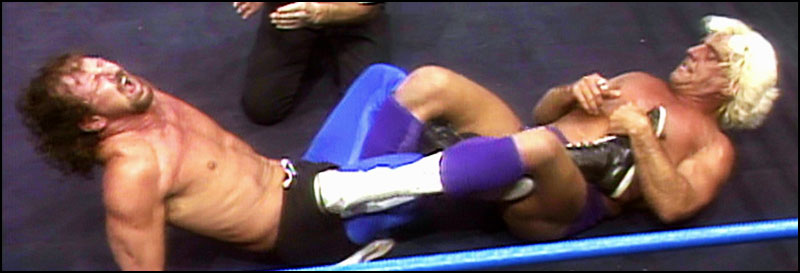
Instantaneously, Funks demeanor went from friendly & congratulatory to angry & confrontational, and he accused Flair of saying that he “wasn’t good enough” to wrestle for the World championship. A calm yet exhausted Flair assured Funk that he wasn’t saying that at all, but rather, simply that Funk would have to earn his shot at the title. Terry’s erratic behavior then settled down as he seemed to understand and accept Flair’s explanation, and he eventually apologized to Flair for the misunderstanding. The former champion extended his hand in friendship to the new titleholder, and when the forgiving Flair went to shake it, Funk blasted him in the face with a wicked left hand that dropped “The Nature Boy” like a rock. With Flair prone on the mat and the fans in attendance in a frenzy, Funk, decked out in a black tuxedo, attacked Flair with a vengeance. After pummeling & bloodying the unsuspecting champion in the ring, Funk took the action to the floor and, in one of the most memorable moments in NWA/WCW history, the wild-eyed, crazed Texan executed his famous Piledriver on the bleeding Flair on top of the announcer’s table.
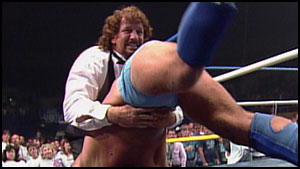 While this highly visual spot would eventually become commonplace during the late Nineties, in 1989, the act of putting a man through a table via a Piledriver was virtually unheard of. Due to this unthinkably vicious and heinous act, Slick Ric’s neck was “broken” and Flair (who had been the most hated man in the NWA going into the match, but by the end of it had, through no coincidence, emerged as the top babyface) remained out of action for more than three months while “recovering.” Meanwhile, as he waited for Flair to return, Funk faced off against the NWA’s bounty of top superstars, including the likes of Steamboat, Sting and Lex Luger. It soon became clear to viewers that Funk’s contract had been taken over by the nefarious NWA manager Gary Hart, who also handled the careers of the ultra-impressive Great Muta and grizzled veteran Dick Slater, among others.
While this highly visual spot would eventually become commonplace during the late Nineties, in 1989, the act of putting a man through a table via a Piledriver was virtually unheard of. Due to this unthinkably vicious and heinous act, Slick Ric’s neck was “broken” and Flair (who had been the most hated man in the NWA going into the match, but by the end of it had, through no coincidence, emerged as the top babyface) remained out of action for more than three months while “recovering.” Meanwhile, as he waited for Flair to return, Funk faced off against the NWA’s bounty of top superstars, including the likes of Steamboat, Sting and Lex Luger. It soon became clear to viewers that Funk’s contract had been taken over by the nefarious NWA manager Gary Hart, who also handled the careers of the ultra-impressive Great Muta and grizzled veteran Dick Slater, among others.
Of course, the excitement caused when Flair finally returned to action against Funk translated into the biggest P.P.V. numbers the promotion had ever garnered up to that point, as well as stellar ratings for the episodes of TBS’s Clash of the Champions that featured the ongoing Flair-Funk war. Following his lengthy, intense feud with Flair, Funk continued to compete and he remained a key player within the NWA However, then-NWA/WCW President Jim Herd was intent on “retiring” Funk and, consequently, his talents were put to work behind the scenes as part of the NWA’s creative team. As a result, Funk began to slowly reduce his air time to the point where he was able to make the transition from a hated wrestler to a respected TV announcer. As a color man (Funk worked primarily opposite lead announcer Jim Ross, as well as Gordon Solie and play-by-play man Chris Cruise) The Funker became an integral part of the NWA broadcast team, working not only on WCW Saturday Night but also as the color commentator for the NWA/WCW’s syndicated programs and the monthly pay-per-view shows. For the better part of two years, Funk was one of the NWA/WCW’s main voices and he capably filled the role of a knowledgeable veteran commentator. But, as always, there was another new challenge awaiting Terry Funk and he listened to his gut instinct, travelling wherever it told him to go.
Following his run in WCW, the “retired” Funk once again made a surprise return to in-ring action. First, he made an unexpected stop in Memphis, home of the USWA, and renewed his unending feud with Jerry “The King” Lawler. Picking up right where they’d left off years earlier, the two legends battled for pride and championship gold, with Funk adding insult to injury by taking Lawler’s USWA Unified World Heavyweight title on November 5, 1990. Funk then went on to rule The King’s kingdom for nearly six months before dropping the title back to Lawler on March 11, 1991. After his stay in the USWA came to an end, Funk moved on to new challenges and, in genuine Terry Funk fashion, he did so with the one promotion that was truly on the cutting edge of the wrestling scene, the violent, controversial group known as ECW. While he was decades older than his young ECW competition, Funk nevertheless more than held his own during this, the fourth separate decade in which he had wrestled. Trading in his old Spinning Toe Hold for top-rope Moonsaults and Hurricanranas, the adaptable veteran was by no means a throwback to some long-lost era. Instead, Funk, as always, established himself as a leader, not a follower. Early in 1993, he defeated Jimmy Snuka to win the ECW World TV title (which he eventually lost to one of his major ECW foes, the suicidal Sabu) and then followed that up by winning the Eastern Championship Wrestling Heavyweight title on December 26, 1993. Having a legendary, world-famous former NWA World champion as its titleholder definitely added credibility to the young independent promotion. However, having a champion (and locker room leader) as dedicated and hardworking as Terry Funk proved to be even more valuable to ECW.
His first reign as the ECW champion ended when he lost to “The Franchise” Shane Douglas during a special 8-man tag match that pitted Douglas & Mr. Hughes & The Public Enemy vs Funk & Road Warrior Hawk & Kevin Sullivan & The Tazmaniac. Following his loss of the title, Funk engaged in a exciting new feud with ECW’s foul-mouthed but highly talented Franchise and, at the same time, continued his endless war against Sabu. Much as he had done with the upstart Japanese hardcore leagues FMW and the IWA, Terry Funk worked hard at establishing ECW as a legitimate, successful wrestling promotion by giving 100% of his efforts in each and every match he wrestled. Equally important was the fact that he helped nurture and guide the young ECW locker room during its infancy, conveying his wealth of knowledge to the next generation of workers.
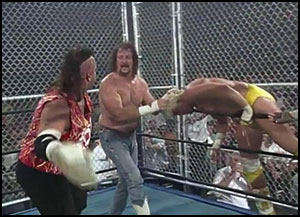 Midway through the decade, though, Funk left ECW briefly to return to WCW, where he once again wasted no time in stirring up trouble. This time, Funk was back to reignite his feud with arch nemesis “The American Dream” Dusty Rhodes, via Rhodes’ young son, Dustin. While the Terry Funk vs. Dustin Rhodes matches did not necessarily carry the same weight and importance that his battles with Dusty had twenty years earlier, their mid-Nineties feud in WCW was still very hard-fought, exciting and, at times, quite bloody. Under the managerial guidance of Col. Robert Parker, Funk also formed a fairly successful team with Bunkhouse Buck during this tour of World Championship Wrestling. Still, the wily former champion was never one to wear out his welcome, and once he felt it was time to move on, Funk didn’t hesitate. Meanwhile, ECW owner Paul Heyman was more than happy to welcome his former World champion back to the renegade northeastern promotion. By the time he once again began wrestling for ECW full-time, pro wrestling’s “little promotion that could” had outgrown its once very regional boundaries and was ready to go national. Not long after his return, “The Hardcore Legend” regained the ECW (which was no longer known as Eastern, but rather, Extreme Championship Wrestling) World title on April 13, 1997 in the main event of the upstart company’s first pay-per-view, Barely Legal. The Funker held the ECW World title for nearly a half-year and, as the promotion’s base of operations grew, he defended the prestigious young belt in new ECW cities across the country.
Midway through the decade, though, Funk left ECW briefly to return to WCW, where he once again wasted no time in stirring up trouble. This time, Funk was back to reignite his feud with arch nemesis “The American Dream” Dusty Rhodes, via Rhodes’ young son, Dustin. While the Terry Funk vs. Dustin Rhodes matches did not necessarily carry the same weight and importance that his battles with Dusty had twenty years earlier, their mid-Nineties feud in WCW was still very hard-fought, exciting and, at times, quite bloody. Under the managerial guidance of Col. Robert Parker, Funk also formed a fairly successful team with Bunkhouse Buck during this tour of World Championship Wrestling. Still, the wily former champion was never one to wear out his welcome, and once he felt it was time to move on, Funk didn’t hesitate. Meanwhile, ECW owner Paul Heyman was more than happy to welcome his former World champion back to the renegade northeastern promotion. By the time he once again began wrestling for ECW full-time, pro wrestling’s “little promotion that could” had outgrown its once very regional boundaries and was ready to go national. Not long after his return, “The Hardcore Legend” regained the ECW (which was no longer known as Eastern, but rather, Extreme Championship Wrestling) World title on April 13, 1997 in the main event of the upstart company’s first pay-per-view, Barely Legal. The Funker held the ECW World title for nearly a half-year and, as the promotion’s base of operations grew, he defended the prestigious young belt in new ECW cities across the country.
Funk’s final reign as the kingpin of Extreme Championship Wrestling ended on August 9, 1997 when he dropped the title to archrival Sabu in Philadelphia, Pennsylvania. Having elevated several of the young ECW stars while champion, Funk remained a key member of the ECW roster, despite no longer holding the promotion’s World Title belt. He soon became involved in a controversial and violent feud with a wrestler who was actually very similar to him, the maniacal Cactus Jack, which further strengthened the overall ECW lineup with a very strong, headlining bout that did not involve any title belts. What was involved in the Cactus-Funk feud, however, was plenty of blood, fire, more blood, non-stop 4-star brawling, a variety of weapons & props, a bit more blood, a chaotic near riot, and, yes, more blood. And, it was within those bloodstained rings of Extreme Championship Wrestling that Terry Funk was truly in his own element. As always, though, new challenges beckoned Funk and eventually, his time in ECW came to its end. Following his five-year run with the trendsetting young promotion, he returned to the WWF after a ten-year absence from the Federation. Portraying a character named “Chainsaw Charlie,” Funk became involved in a long running storyline with his former ECW & Japanese rival Cactus Jack, better known in the WWF as Mankind. The two brawlers fought both with and against each other during their WWF program, and together they scored a WWF World Tag team title along the way by defeating the New Age Outlaws in 1998. To his enduring credit, the aged & battered ring warrior never failed to keep up with the talented & hungry WWF workers of the day, most of whom were thirty (or more) years younger than the rugged veteran.
Following a brief period away from the action once his storyline with Mick Foley had run its course, Funk (once again) made an unexpected return to pro wrestling in 2000. However, this time it was not with ECW or the WWF, but instead as the new Commissioner of the Federation’s primary competitor, Ted Turner’s WCW. As the new WCW Commissioner, The Funker took on the imposing forces of the newly reunited NWO. Although the role of commissioner had actually been planned for Ric Flair, a contract dispute kept “The Nature Boy” from appearing and, in his place, WCW chose “The Hardcore Legend” Terry Funk, who did his best with the new and challenging assignment. Commissioner Funk was part of several highly entertaining storylines, including the formation of his anti-NWO group, The Old Age Outlaws, and the infamous “chicken-on-a-fist” angle, among others. Clearly, Funk had not lost his touch, nor his sense of humor. Eventually, though, he lost a match to Kevin Nash that stripped him of his duties as WCW Commissioner. Yet, true to form, Funk (who by this time was nearly sixty years old) simply bounced back by winning the WCW Hardcore title no less than three times in 2000. He gained his first WCW Hardcore title by defeating the entertaining “Screamin” Norman Smiley, his second by going over a former ECW rival in “The Franchise” Shane Douglas and his final Hardcore title victory came when defeated the young and talented Crowbar.
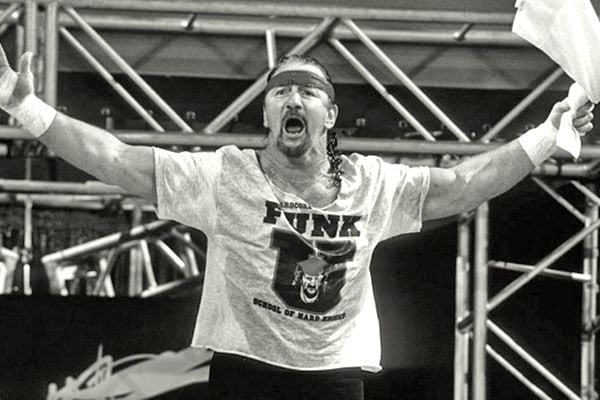 Unfortunately, yet somewhat appropriately, Funk was also in WCW at the time when the once mighty promotion, the last surviving remnant of the original National Wrestling Alliance, ceased to exist in 2001. With the end of WCW came, seemingly, the end of Terry Funk’s incredible career in pro wrestling. True to form, though, he soon resurfaced and was involved in major storylines for both Ring of Honor and, later, Major League Wrestling. He also returned to the Land of the Rising Sun, wrestling matches in both New Japan and All Japan, all while being just a few years short of 70 years old. On September 22, 2017, a 72 year-old Funk wrestled what was purported to be his final match, teaming with the Rock & Roll Express to defeat Jerry Lawler, Brian Christopher and Doug Gilbert. However, if history is any indicator, Terry Funk hasn’t actually retired, he’s just waiting for the right time to make his next surprise sneak attack…
Unfortunately, yet somewhat appropriately, Funk was also in WCW at the time when the once mighty promotion, the last surviving remnant of the original National Wrestling Alliance, ceased to exist in 2001. With the end of WCW came, seemingly, the end of Terry Funk’s incredible career in pro wrestling. True to form, though, he soon resurfaced and was involved in major storylines for both Ring of Honor and, later, Major League Wrestling. He also returned to the Land of the Rising Sun, wrestling matches in both New Japan and All Japan, all while being just a few years short of 70 years old. On September 22, 2017, a 72 year-old Funk wrestled what was purported to be his final match, teaming with the Rock & Roll Express to defeat Jerry Lawler, Brian Christopher and Doug Gilbert. However, if history is any indicator, Terry Funk hasn’t actually retired, he’s just waiting for the right time to make his next surprise sneak attack…
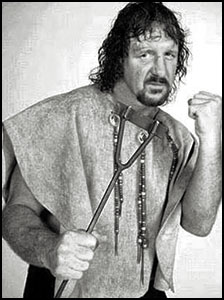 Terry Funk is the recipient of several prestigious awards, including Pro Wrestling Illustrated’s Wrestler of the Year (1976), Tokyo Sports’ Lifetime Achievement Award (1983), and the Cauliflower Alley Club’s Iron Mike Mazurki Award (2005). Funk is also a member of the WCW Hall of Fame (1995), the Stampede Wrestling Hall of Fame (1995), the Wrestling Observer Newsletter Hall of Fame (1996), the Professional Wrestling Hall of Fame and Museum (2004), the WWE Hall of Fame (2009), the NWA Hall of Fame (2009), the St. Louis Wrestling Hall of Fame (2010), and the International Wrestling Institute & Museum’s George Tragos/Lou Thesz Professional Wrestling Hall of Fame (2010).
Terry Funk is the recipient of several prestigious awards, including Pro Wrestling Illustrated’s Wrestler of the Year (1976), Tokyo Sports’ Lifetime Achievement Award (1983), and the Cauliflower Alley Club’s Iron Mike Mazurki Award (2005). Funk is also a member of the WCW Hall of Fame (1995), the Stampede Wrestling Hall of Fame (1995), the Wrestling Observer Newsletter Hall of Fame (1996), the Professional Wrestling Hall of Fame and Museum (2004), the WWE Hall of Fame (2009), the NWA Hall of Fame (2009), the St. Louis Wrestling Hall of Fame (2010), and the International Wrestling Institute & Museum’s George Tragos/Lou Thesz Professional Wrestling Hall of Fame (2010).
by Mark Long
Luther Lindsay is the ultimate example of what could have, and probably should have been. He was an outstanding athlete who used his immense talent to be an established grappler considered the finest African-American wrestler of his generation and has finally been recognized as one of the best of all time.
Luther Jacob Goodall was born on December 30, 1924 near Norfolk, Virginia, with two brothers and a sister. His father died when Luther was five years old and he was raised by his mother and stepfather, a local minister. After growing up in Gibsonville, North Carolina, he returned to the Norfolk area to attend Norfolk State University, a historically Black university where he was a standout player in football, standing 5’ 9” and weighing 235 lbs. He later transferred to Hampton Institute, another HBCU school where he continued his football career and also competed in wrestling, named Central Intercollegiate Athletic Association champion. On the football field, he was touted as a Negro All-American, playing tackle and guard for the Pirates. At the time, however, he was unable to gain national recognition because segregation laws throughout the south prevented him from competing against white athletes. After college, unable to play in the segregated National Football League, he moved to Canada to play football professionally for the Hamilton Tiger-Cats of the Canadian Football League for two years.
 While in Canada, he was introduced to Stu Hart, a professional wrestler and promoter in Calgary, Alberta, Canada. Hart was impressed with Goodall’s athleticism and began training him as a professional wrestler. Luther took on quickly to the training and often assisted Hart in training other wrestlers in Hart’s famous dungeon. Initially Goodall’s greatest asset was his enormous strength and conditioning (he was alleged to have bench-pressed more than 450 lbs.) but in time he became a superior submission wrestler. Hart taught him different techniques and holds and at one point during training, Goodall escaped from one of Hart’s holds and reversed it, applying a hold that forced Stu to submit. Hart’s reverence for Lindsay was well known, as he named his son Ross Lindsay Hart and carried a photo of Luther in his wallet for 50 years.
While in Canada, he was introduced to Stu Hart, a professional wrestler and promoter in Calgary, Alberta, Canada. Hart was impressed with Goodall’s athleticism and began training him as a professional wrestler. Luther took on quickly to the training and often assisted Hart in training other wrestlers in Hart’s famous dungeon. Initially Goodall’s greatest asset was his enormous strength and conditioning (he was alleged to have bench-pressed more than 450 lbs.) but in time he became a superior submission wrestler. Hart taught him different techniques and holds and at one point during training, Goodall escaped from one of Hart’s holds and reversed it, applying a hold that forced Stu to submit. Hart’s reverence for Lindsay was well known, as he named his son Ross Lindsay Hart and carried a photo of Luther in his wallet for 50 years.
Goodall’s first recorded professional match was against Al Tucker in Chicago, Illinois on November 21, 1951. He wrestled under the name Luther Lindsay at the suggestion of Ohio promoter Al Haft (Lindsay being the maiden name of Luther’s wife Gertrude, whom he had met in college in 1949). Within two years, he had moved to the state of Washington where he began competing against the top wrestlers in the region. As one of the few Black wrestlers in the business, he was often billed as the U.S. Colored or Negro Heavyweight Champion, wrestling against other Black performers such as Woody Strode, Jack Claybourne, Dory Dixon, Sailor Art Thomas and Bearcat Wright (due to segregation in much of the south, Blacks were only allowed to wrestle against one another). While this was for the most part simply a titular designation rather than a competitive one, it did help in terms of recognition throughout the country. Thus, when the National Wrestling Alliance world champion Lou Thesz came to Tacoma, Washington in July 1953, he met Lindsay for a world title match. Lindsay was only the second Black wrestler to challenge for the most coveted title in the world (the first being Seelie Samara in 1950). The match resulted in a time limit draw and Luther’s performance impressed the world champion immensely, with Thesz later suggesting that Lindsay was one of the top 25 professional wrestlers of all time.
“(Luther was) without question, the best black wrestler ever. Luther had a fantastic body and limitless energy to compliment his skill. Like many other industries, wrestling was not open to African-American wrestlers during his career, so it was an amazing accomplishment for Luther to even learn his craft. His place in history is not because he was black; it is in spite of the fact he was black… Stu Hart was not alone in his admiration of Luther. We should never forget the hardship on him in just travelling during the times of segregation and extreme discrimination. He was truly isolated from the rest of the boys. He was a hell of a talent and a hell of a man.” -Lou Thesz
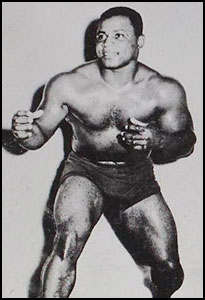 Now wrestling mostly in the Pacific Northwest, Lindsay began facing more well known grapplers including winning a best 2 out of 3 falls against Bronko Nagurski. In addition to getting opportunities to wrestle top stars, he also was getting opportunities to wrestle for the title belt and on January 19, 1954, he teamed with Bobby Bruns to win the NWA Hawaii Tag Team Championship, defeating Bud Curtis and Tommy O’Toole. It was the first of several tag teams titles he would win, later capturing the NWA Canadian Open Tag Team with Jack Claybourne on September 28, 1954 and the NWA Pacific Northwest Tag Team Championship on May 15, 1955, teaming with George Dusette. On May 24, 1955, Lindsay won the inaugural NWA Pacific Northwest Heavyweight Championship, defeating Roger Mackay in a tournament final in Salem, Oregon. In doing so, he became the first Black wrestler to win a NWA singles title in the alliance’s seven year history.
Now wrestling mostly in the Pacific Northwest, Lindsay began facing more well known grapplers including winning a best 2 out of 3 falls against Bronko Nagurski. In addition to getting opportunities to wrestle top stars, he also was getting opportunities to wrestle for the title belt and on January 19, 1954, he teamed with Bobby Bruns to win the NWA Hawaii Tag Team Championship, defeating Bud Curtis and Tommy O’Toole. It was the first of several tag teams titles he would win, later capturing the NWA Canadian Open Tag Team with Jack Claybourne on September 28, 1954 and the NWA Pacific Northwest Tag Team Championship on May 15, 1955, teaming with George Dusette. On May 24, 1955, Lindsay won the inaugural NWA Pacific Northwest Heavyweight Championship, defeating Roger Mackay in a tournament final in Salem, Oregon. In doing so, he became the first Black wrestler to win a NWA singles title in the alliance’s seven year history.
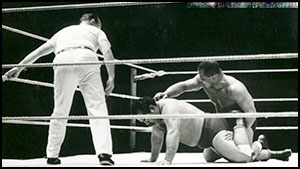 Later in 1955, Luther moved to Texas where he would work for promoter Morris Sigel. As the state was forced to comply with desegregation laws applied to southern states, he was featured in the first interracial match in Texas facing Duke Keomuka and later wrestled to another draw against Thesz in December. In January 1956, he moved to the Dallas area promoted by Ed McLemore and began another feud with Keomuka. Their matches often involved their seconds, with Danny McShain lending aid to Luther and Tiny Mills interfering on behalf of Keomuka. He later teamed with Pepper Gomez against “Iron” Mike DiBiase and Danny Plechas for the NWA Texas Tag Team titles. Luther and Pepper were unable to win the belts despite controversial finishes and he returned to singles action against Keomuka and Thesz. Against Thesz he lost a 2 out of 3 match in December and then scored another draw in January of 1956. Considered a legitimate challenger to the NWA’s top crown, he matched up against the new NWA World Heavyweight Champion “Whipper” Billy Watson in Dayton, Ohio on October 25, 1956, but had to settle, once again, for a draw. He would later face NWA Champion Dick Hutton (a loss in Dallas in December 1957) before moving to the east coast to work for Vince McMahon and Toots Mondt of the Capitol Wrestling Corporation in 1959.
Later in 1955, Luther moved to Texas where he would work for promoter Morris Sigel. As the state was forced to comply with desegregation laws applied to southern states, he was featured in the first interracial match in Texas facing Duke Keomuka and later wrestled to another draw against Thesz in December. In January 1956, he moved to the Dallas area promoted by Ed McLemore and began another feud with Keomuka. Their matches often involved their seconds, with Danny McShain lending aid to Luther and Tiny Mills interfering on behalf of Keomuka. He later teamed with Pepper Gomez against “Iron” Mike DiBiase and Danny Plechas for the NWA Texas Tag Team titles. Luther and Pepper were unable to win the belts despite controversial finishes and he returned to singles action against Keomuka and Thesz. Against Thesz he lost a 2 out of 3 match in December and then scored another draw in January of 1956. Considered a legitimate challenger to the NWA’s top crown, he matched up against the new NWA World Heavyweight Champion “Whipper” Billy Watson in Dayton, Ohio on October 25, 1956, but had to settle, once again, for a draw. He would later face NWA Champion Dick Hutton (a loss in Dallas in December 1957) before moving to the east coast to work for Vince McMahon and Toots Mondt of the Capitol Wrestling Corporation in 1959.
In 1960 he decided to move north to work for his friend Stu Hart’s Calgary Stampede Wrestling promotion. He captured a win over Don Leo Jonathan and then teamed with Oattem Fisher to win the Stampede International Tag Team Championship. While in Canada he would match up unsuccessfully four times in April and May of 1960 against NWA Champion Pat O’Connor.
After returning briefly to Capitol Wrestling, he moved back to Portland in 1961 and won the NWA Pacific Northwest Heavyweight Championship from “Iron” Mike DiBiase on May 26. He would find his best years in the Portland territory, also winning the NWA Pacific Northwest Tag Team title, once with Bing Ki Lee on June 10, 1961 and once with Herb Freeman on August 10, 1961. After losing his Heavyweight title to Nicholai Volkoff, he traveled to the United Kingdom, winning a match against Mike Marino at the Royal Albert Hall on November 15.
He left for a quick tour of Japan in 1962 and teamed with Ricky Waldo to defeat the great Rikidōzan and Toyonobori for the All Japan Pro Wrestling’s All Asia Tag Team Championship on February 3, 1962. This was a great milestone in being able to capture a belt from the Japanese legend and after dropping the belts, he moved back to the Pacific Northwest where he received an NWA World Heavyweight title match against the “Nature Boy” Buddy Rogers on June 18, 1962 in Seattle Washington. Rogers was too much for him though, and Luther once again came up short in his quest for professional wrestling’s greatest title. His return to Portland was a positive one, though, as he teamed with his former rival Shag Thomas to grab the NWA Pacific Northwest Tag Team belts from Kurt Von Poppenheim & Fritz Von Goering on July 21, 1963. He would then go one on one against Goering and defeated him to win the NWA Pacific Northwest Heavyweight title on August 24. His collaboration with Thomas would prove quite fruitful as they would hold the NWA Pacific Northwest Tag Team on four separate occasions. Later in the year he teamed with Danny Hodge and the two found initial success but Lindsay was severely injured in an automobile accident and was out for the rest of the year. Over the next few years, he traveled to Hawaii where he captured the NWA Hawaii United States Heavyweight Championship belt twice and continued to dominate in tag team action, collecting title belts with Shag Thomas, Pepper Martin and Bearcat Wright. On January 27, 1965, Luther became the first Black wrestler to battle a white wrestler in the deep south when he met Ron Wright in Kingsport, Tennessee (although he had previously wrestled Thesz in Texas in 1955). The National Guard was brought out in fear of rioting but Luther was overwhelmingly the crowd’s favorite, thus opening the box office for Black wrestlers to perform in Dixie.
“He was a real tough wrestler… He was a great athlete. He was a good football player, he was a good wrestler. I can’t say enough about how good Luther was in the ring, and how he conducted himself as an individual.” – Dick Beyer (The Destroyer)
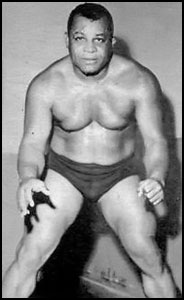 In 1966, Lindsay moved back to the east coast, joining Mid-Atlantic Wrestling. With racial tension still simmering in the south, a wrestler named Ike Eakins hurled a racial slur at Lindsay during a televised match on Jim Crockett’s television show All Star Wrestling. WDBJ, the television station airing the show demanded that Eakins apologize during the next broadcast. When Eakins instead repeated the slur, All Star Wrestling was thrown off the air. From 1967 through 1970, he alternated between the Mid-Atlantic and Pacific Northwest territories, teaming with the likes of Abe Jacobs, Dean Ho and Shag Thomas, winning the NWA Pacific Northwest Tag Team belts again with Ho and Thomas. He also won the NWA Pacific Northwest Heavyweight title from Tony Borne on June 2, 1967 and again from Beauregard on November 30, 1968. He also defeated Stan Stasiak to win the NWA Canadian Heavyweight Championship (Calgary version) on April 7, 1967 and wrestled NWA World Heavyweight champion Gene Kiniski to a draw on September 20, 1967 in Salem, Oregon. He would later wrestle Dory Funk, Jr. during his NWA World Heavyweight title run in 1970 and in 1971.
In 1966, Lindsay moved back to the east coast, joining Mid-Atlantic Wrestling. With racial tension still simmering in the south, a wrestler named Ike Eakins hurled a racial slur at Lindsay during a televised match on Jim Crockett’s television show All Star Wrestling. WDBJ, the television station airing the show demanded that Eakins apologize during the next broadcast. When Eakins instead repeated the slur, All Star Wrestling was thrown off the air. From 1967 through 1970, he alternated between the Mid-Atlantic and Pacific Northwest territories, teaming with the likes of Abe Jacobs, Dean Ho and Shag Thomas, winning the NWA Pacific Northwest Tag Team belts again with Ho and Thomas. He also won the NWA Pacific Northwest Heavyweight title from Tony Borne on June 2, 1967 and again from Beauregard on November 30, 1968. He also defeated Stan Stasiak to win the NWA Canadian Heavyweight Championship (Calgary version) on April 7, 1967 and wrestled NWA World Heavyweight champion Gene Kiniski to a draw on September 20, 1967 in Salem, Oregon. He would later wrestle Dory Funk, Jr. during his NWA World Heavyweight title run in 1970 and in 1971.
At the tail end of his career, Luther’s body began to deteriorate and his health began to fail. He suffered from high blood pressure and would often suffer nosebleeds during matches. On February 21, 1972, Lindsay was facing Bobby Paul at Park Center in Charlotte, North Carolina. At the end of the match, Lindsay hit his opponent with a diving belly-flop. After securing the pinfall, Luther didn’t move off of his opponent, and when the referee checked on him, he failed to respond. He was moved to the dressing room where he was pronounced dead, the victim of a heart attack.
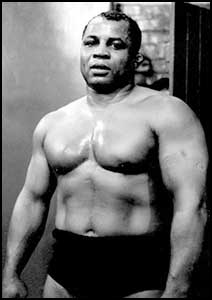 Luther Lindsay’s career could be remembered by the freak incident where he died doing what he loved most, but he was a phenomenal wrestler and remembered by many as an even better man. He was one of the earliest Black wrestlers to have national success and challenge for the top belt in the professional, wrestling for it 26 times. He held numerous regional heavyweight and tag team titles and was one of the few wrestlers to defeat the great Lou Thesz in a singles match on January 16, 1961, in Phoenix, Arizona. He was posthumously inducted into the Stampede Wrestling Hall of Fame in 2003, the George Tragos/Lou Thesz Professional Wrestling Hall Of Fame in 2009, and the WWE Hall of Fame on March 31, 2017.
Luther Lindsay’s career could be remembered by the freak incident where he died doing what he loved most, but he was a phenomenal wrestler and remembered by many as an even better man. He was one of the earliest Black wrestlers to have national success and challenge for the top belt in the professional, wrestling for it 26 times. He held numerous regional heavyweight and tag team titles and was one of the few wrestlers to defeat the great Lou Thesz in a singles match on January 16, 1961, in Phoenix, Arizona. He was posthumously inducted into the Stampede Wrestling Hall of Fame in 2003, the George Tragos/Lou Thesz Professional Wrestling Hall Of Fame in 2009, and the WWE Hall of Fame on March 31, 2017.
Luther Lindsey was the finest gentleman I ever met in my life, period, end of story—of ANY color, or description. – Les Thatcher
by Stephen Von Slagle
In terms of his ring technique, the monolithic 6’6″ 400 lb. Gorilla Monsoon wasn’t a trendsetter or a master technician inside of the squared circle. He was, however, a tremendously agile athlete who unquestionably helped raise the standard of what was expected of a “big man.” Yet, behind the scenes, as a minority owner of the World Wide Wrestling Federation (as well as the World Wrestling Council in Puerto Rico) and a promoter of many cities within the WWWF’s multi-state territory, the respected Monsoon was perhaps even more influential than he was in the ring. Later in his career, he served as the WWF’s lead play-by-play man, and, in many ways, Monsoon became the voice of the WWF for much of the Eighties. For many years, The Gorilla also served as the promotion’s lead road agent, a booker and one of the chief television production supervisors. Indeed, for more than twenty years, Monsoon had his hands on virtually every aspect of the WWF’s live events during some of the Federation’s most prosperous years. It’s safe to say, outside of his business partners Vince McMahon, Sr. and, later, Vince McMahon, Jr., that Gorilla Monsoon was one of the most important figures in the history of WWE and, by extension, pro wrestling itself.
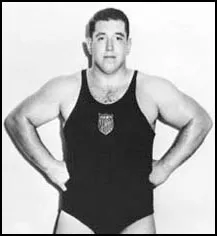
Robert Morella was born on June 4, 1937 in Rochester, New York and graduated from Ithaca College, where he lettered not only in wrestling, but also track and football. Morella was an exceptionally impressive athlete who possessed incredible speed and stamina for a man of his considerable height and weight. Weighing in at 350 lbs., he took second place in the 1959 NCAA national wrestling championships. Following college, he travelled to Calgary, was trained by Stu Hart and began his career as a professional wrestler in 1958. Almost immediately, the huge, bearded Gorilla Monsoon (who was originally billed as hailing from Manchuria and portrayed a near-caveman type of character) became a box office attraction throughout the northeast and he quickly established himself as one of the most hated men in the sport. That position was cemented when Monsoon formed a lethal team with the even more reviled Killer Kowalski. The two gigantic heels, both of whom stood well over six and a half feet tall and tipped the scales at a combined weight of nearly eight hundred pounds, were one of the most devastating and feared teams of their era. They were, not surprisingly, also one of the most successful, and together Monsoon & Kowalski captured the prized WWWF United States Tag title on November 14, 1963 by defeating the team of Skull Murphy & Brute Bernard.
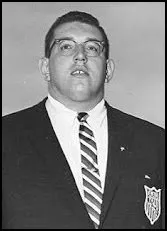 What separated Gorilla Monsoon from the majority of the other big men who had competed in the pro ranks was his speed and agility, which was quite extraordinary for the times. Additionally, Monsoon had a very solid grasp of wrestling fundamentals, going back to his college days when he had lettered in the sport. When you combined his speed and grappling knowledge with the overwhelming power possessed by the 400-pounder, it becomes clear why Monsoon stood out amongst his plodding, methodic contemporaries. Although he had been a major star in the World Wide Wrestling Federation for several years, Monsoon’s notoriety reached a peak during the years that he was one of WWWF World champion Bruno Sammartino’s primary opponents. In the 6’6″ Monsoon, fans saw a legitimate threat to Sammartino’s World title and their many battles resulted in sold-out crowds in major arenas all along the east coast. Despite Bruno’s legendary strength, the overwhelming size advantage of his challenger was almost too much for “The Living Legend” to handle, and therein can be found the source of the box-office success of the Sammartino vs. Monsoon feud. Throughout much of their famous program, which resulted in more than a dozen Bruno-Monsoon main events at Madison Square Garden, the gigantic Monsoon, who featured a devastating Airplane Spin followed by a crushing Gorilla Splash as his big finisher, would relentlessly pound on the champion, and, occasionally, he would even out-wrestle him. However, the beloved blue-collar champion was always able to fight back against the odds and somehow come out the victor, much to the delight of his adoring public.
What separated Gorilla Monsoon from the majority of the other big men who had competed in the pro ranks was his speed and agility, which was quite extraordinary for the times. Additionally, Monsoon had a very solid grasp of wrestling fundamentals, going back to his college days when he had lettered in the sport. When you combined his speed and grappling knowledge with the overwhelming power possessed by the 400-pounder, it becomes clear why Monsoon stood out amongst his plodding, methodic contemporaries. Although he had been a major star in the World Wide Wrestling Federation for several years, Monsoon’s notoriety reached a peak during the years that he was one of WWWF World champion Bruno Sammartino’s primary opponents. In the 6’6″ Monsoon, fans saw a legitimate threat to Sammartino’s World title and their many battles resulted in sold-out crowds in major arenas all along the east coast. Despite Bruno’s legendary strength, the overwhelming size advantage of his challenger was almost too much for “The Living Legend” to handle, and therein can be found the source of the box-office success of the Sammartino vs. Monsoon feud. Throughout much of their famous program, which resulted in more than a dozen Bruno-Monsoon main events at Madison Square Garden, the gigantic Monsoon, who featured a devastating Airplane Spin followed by a crushing Gorilla Splash as his big finisher, would relentlessly pound on the champion, and, occasionally, he would even out-wrestle him. However, the beloved blue-collar champion was always able to fight back against the odds and somehow come out the victor, much to the delight of his adoring public.
After enjoying several good years of main-eventing on WWWF cards up and down the east coast, Monsoon eventually felt the time had come for a change of scenery. Following his lengthy run with the World Wide Wrestling Federation, Monsoon relocated to the west coast and began competing for the Los Angeles-based WWA during the mid-Sixties. Not long after arriving in the popular southern California promotion, Monsoon formed a team with the 6’4″ Luke Graham that immediately ran roughshod over their competition. Then, only weeks after forming their team, The Gorilla and “Crazy” Luke captured the prized WWA World Tag Team championship in January of 1966. However, soon after winning the World title, there was a storyline falling out between the two that resulted in the end of their partnership. The WWA tag belts were held up, and each man was allowed to pick a new partner and then wrestle each other for the held-up title. Monsoon picked the intimidating rulebreaker known as El Mongol, while Graham chose the legendary “Moondog” Lonnie Mayne. On January 23, 1966 the two teams met, with the larger duo of Monsoon & El Mongol coming out the winners and new WWA World Tag Team champions.
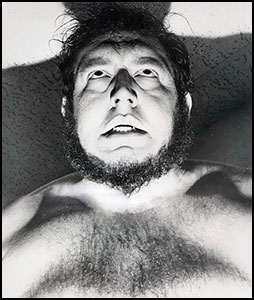 While his success in the tag team ranks was impressive, Monsoon was also a very capable singles performer who was seen as a legitimate main-event caliber wrestler by the fanbase of the day. That perception was perpetuated by important victories such as Monsoon’s win over Spiros Arion for the IWA World Heavyweight title on February 16, 1968. By capturing the Australian-based International Wrestling Alliance’s World championship, Monsoon once again set himself apart as one of the best in the business. Eventually, after high-profile runs in several different promotions throughout the world, Monsoon returned “home” to the Northeast and the World Wide Wrestling Federation. Once again, the agile giant proved himself to be a major drawing card for the promotion and eventually the villainous Monsoon’s popularity and level of respect amongst the fans grew to the point where the only logical step was to turn him babyface. The decision proved to be very wise. Once the switch had been made, wrestling fans of the day rallied behind the gigantic new “good guy.” Simultaneously, the heretofore semi-mute, growling “Manchurian” was suddenly able to speak perfect English. This curious development did not seem to matter and Monsoon’s popularity with fans soon placed him second only to Sammartino. Meanwhile, behind the scenes and away from the television cameras, Monsoon’s power within the WWWF’s management structure greatly increased as well. Robert Morella became a minority owner in the successful northeastern group and he also began exclusively promoting several small and mid-sized cities within the WWWF’s multi-state territory, primarily in New Jersey, Pennsylvania and Delaware.
While his success in the tag team ranks was impressive, Monsoon was also a very capable singles performer who was seen as a legitimate main-event caliber wrestler by the fanbase of the day. That perception was perpetuated by important victories such as Monsoon’s win over Spiros Arion for the IWA World Heavyweight title on February 16, 1968. By capturing the Australian-based International Wrestling Alliance’s World championship, Monsoon once again set himself apart as one of the best in the business. Eventually, after high-profile runs in several different promotions throughout the world, Monsoon returned “home” to the Northeast and the World Wide Wrestling Federation. Once again, the agile giant proved himself to be a major drawing card for the promotion and eventually the villainous Monsoon’s popularity and level of respect amongst the fans grew to the point where the only logical step was to turn him babyface. The decision proved to be very wise. Once the switch had been made, wrestling fans of the day rallied behind the gigantic new “good guy.” Simultaneously, the heretofore semi-mute, growling “Manchurian” was suddenly able to speak perfect English. This curious development did not seem to matter and Monsoon’s popularity with fans soon placed him second only to Sammartino. Meanwhile, behind the scenes and away from the television cameras, Monsoon’s power within the WWWF’s management structure greatly increased as well. Robert Morella became a minority owner in the successful northeastern group and he also began exclusively promoting several small and mid-sized cities within the WWWF’s multi-state territory, primarily in New Jersey, Pennsylvania and Delaware.
In addition to his great success in the U.S., Canada and Australia, Monsoon also established himself as a major superstar in the Orient, particularly during the early Seventies. The gargantuan Monsoon enjoyed several tours of Japan, wrestling for the Japanese Wrestling Association, which was run by the legendary Rikidozan. Naturally, the 6’6″ 420 lb. Gorilla Monsoon was inevitably paired against the Japanese giant, Shohei Baba. A true box-office attraction, the two monolithic grapplers faced off many times, most notably in the finals of the 14th Annual World League Tournament. Monsoon lost the match to Baba, however, but by fighting valiantly and displaying his tremendous wrestling knowledge, he did not lose his honor, which had traditionally been even more important than pinfall victories in the eyes of most Japanese wrestling fans.
In 1973, Morella continued to expand his influence on the sport by being one of the three original co-owners (along with Carlos Colon and Victor Jovica) of the Puerto Rican based Capitol Sports Promotions, known publicly as the World Wrestling Council. In addition to owning a part of the promotion, Monsoon was also a top attraction for the WWC, and he wrestled there frequently throughout the Seventies. On July 30, 1977, Gorilla Monsoon captured the promotion’s top prize, the WWC North American Heavyweight title. by defeating Hartford Love in San Juan. When wrestling in Puerto Rico, the big Gorilla reverted back to his old heelish ways, and the anything-but-gentle giant held the prestigious North American title for nearly a full year before finally being upset by his old nemesis from the WWWF, Bruno Sammartino. Monsoon came back to defeat Bruno just two months later, though, and would go on to hold the title for another eight months before finally being defeated by Puerto Rican legend (and Morella’s business partner) Carlos Colon on March 3, 1979 in Bayamon.
In 1976, Monsoon gained worldwide mainstream notoriety when he had a very public sparring session (which, not coincidentally, was broadcast on WWWF television programs) with the World Heavyweight Boxing champion, the legendary Muhammad Ali. Ali, of course, was training for his closed-circuit Boxer vs. Wrestler match against Japanese champion Antonio Inoki. Ever the showman, the braggadocious Ali openly claimed that he could (and would) knock out any wrestler on the planet, including Gorilla Monsoon. However, when it came time to actually get inside of the ring against the towering four hundred-pounder, the famous Heavyweight Boxing champion found out, rather quickly, that it’s the wrestler, not the boxer, who has the advantage in this unique type of bout. After a few moments of the lightning quick Ali evading his huge sparring partner, Monsoon finally got his clutches on the legendary boxer and, as the crowd erupted in cheers, hoisted him up over his shoulders. The Gorilla then proceeded to perform his patented Airplane Spin on Ali, who was able to scramble from the ring before receiving Monsoon’s customary follow-up move, the devastating Gorilla Splash. On June 26, 1976, the day of the Ali-Inoki bout, Monsoon also made headlines when he became involved in a major scuffle on the undercard during a match between Andre the Giant and former Heavyweight boxing contender (and the inspiration for Sylvester Stallone’s “Rocky” character) Chuck Wepner. At the end of their Boxer vs. Wrestler match, the camps for both Andre and Wepner had a frenzied pull-apart, with dozens of trainers involved. At the heart of the planned chaos was Gorilla Monsoon, who instigated the melee by forcefully shoving one of Wepner’s trainers. The spectacle made for some great press and the following day the story was headline news across the world.
The WWWF mainstay became a prime challenger for “Superstar” Billy Graham and was, in fact, the trendsetting, newly-crowned Graham’s first opponent as champion at Madison Square Garden. Throughout the WWWF territory, the Graham vs. Monsoon wars were exciting and intense encounters that always resulted in a sold-out arena. While The Superstar was invariably able to escape with his title intact against the Gorilla, the flamboyant muscleman never did so without having to first put up a major fight against the legitimately dangerous behemoth. During the Seventies, Monsoon also engaged in a noteworthy feud with “The Russian Bear” Ivan Koloff, as well as several other top Federation “bad guys.” One of his final programs as a full-time wrestler came in 1979 against the impressive young rookie heel known as “The Incredible” Hulk Hogan.
Following his retirement in 1980, Monsoon remained a very visible part of the WWF management team, primarily as a TV announcer. Once the World Wrestling Federation, under the leadership of Vince McMahon, Jr., had begun its national expansion, Monsoon became the promotion’s lead announcer and the host of several successful television programs. In addition to his duties on the WWF’s cable and syndicated programs, Monsoon had the honor of doing the commentary for the first five WrestleMania events, as well as all of the other early pay-per-views in WWE’s history. Gorilla Monsoon also served as the (pre-Monday Night Raw) host of the USA Network’s highly-rated Prime Time Wrestling, with co-hosts Jesse Ventura and, later, Bobby “The Brain” Heenan, for over seven years.
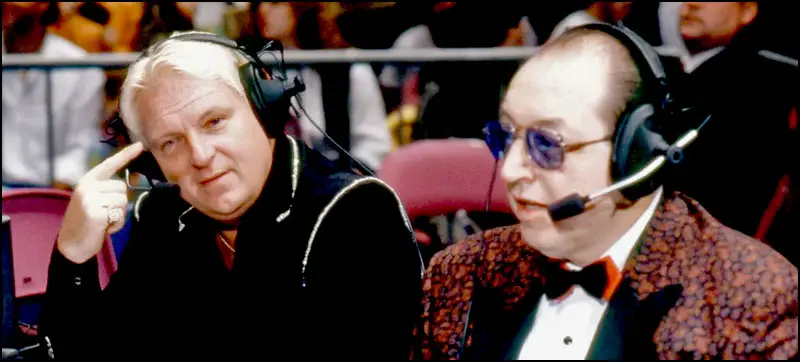
By virtue of his constant exposure on WWF programs, as well as his memorable, unique commentary style and entertaining chemistry with both Ventura and Heenan, Gorilla Monsoon eventually became the voice of the WWF during the Eighties. But, with the early-Nineties came a lessened role for Monsoon, at least in terms of his on-air persona. Behind the scenes, Morella was still a fixture at every major WWF live event, making sure that the shows went off in a smooth, professional manner that gave every paying customer his/her money’s worth.
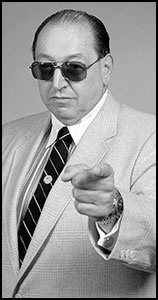 But, later that same year, tragedy struck Morella when his son, WWF referee Joey Morella was killed in a car accident after falling asleep at the wheel. Understandably, the sudden, unexpected death of his young son deeply affected Morella, who took an extended leave of absence from his duties with the WWF.
But, later that same year, tragedy struck Morella when his son, WWF referee Joey Morella was killed in a car accident after falling asleep at the wheel. Understandably, the sudden, unexpected death of his young son deeply affected Morella, who took an extended leave of absence from his duties with the WWF.
The respected former grappler eventually returned to World Wrestling Federation storylines a year later, serving as the new WWF President. During his tenure as President, which lasted from 1995 through 1998, Monsoon made several important “decisions” and his rulings were the catalyst behind some of the Federation’s most memorable match-ups. Sadly, though, Monsoon’s failing health continued to be a factor and, eventually, he was forced to withdraw once again from the promotion’s storylines. Monsoon’s final public appearance came at the 1999 edition of WrestleMania, where the popular veteran (who had clearly lost a great deal of weight) served as a judge for the Butterbean-Bart Gunn “Brawl for All” contest.
 Bob Morella was honored by the Cauliflower Alley Club in 1994 and inducted to several Halls of Fame, including the Ithaca College Athletic Hall of Fame (1973), the WWE Hall of Fame (1994), the Professional Wrestling Hall of Fame and Museum (2010), and the International Wrestling Institute & Museum’s George Tragos/Lou Thesz Professional Wrestling Hall of Fame (2010).
Bob Morella was honored by the Cauliflower Alley Club in 1994 and inducted to several Halls of Fame, including the Ithaca College Athletic Hall of Fame (1973), the WWE Hall of Fame (1994), the Professional Wrestling Hall of Fame and Museum (2010), and the International Wrestling Institute & Museum’s George Tragos/Lou Thesz Professional Wrestling Hall of Fame (2010).
Following years of kidney related health problems, Robert “Gorilla Monsoon” Morella passed away on September 19, 1999 at the age of 62.
by Stephen Von Slagle
Without question, the legendary “High Chief” Peter Maivia is remembered for many things; being a powerful, agile performer who was well-schooled in the fundamentals of pro wrestling, his famous full-body tribal tattoos, his successful stints in top promotions throughout the NWA, WWWF, and AWA, or simply being Dwayne “The Rock” Johnson’s grandfather. But, it can be argued that Maivia’s greatest contribution to the sport of professional wrestling was the fact that by using his natural charisma and impressive athletic ability, he was able to capitalize on the exposure he received by being (essentially) the first ‘islander’ to be showcased by promoters beginning in the early Sixties. In doing so, the talented Samoan opened the door for so many of his fellow Polynesians (several of whom also went on to become pro wrestling legends) to have a place in the professional wrestling business.
 Maivia was born Fanene Leifi Pita Anderson on April 6, 1937, in American Samoa. Having received his training from Steve Rickard, Maivia began his career as a professional wrestler in 1962 at the age of twenty-four. Getting his start in the nation of New Zealand while competing for Rickard’s NWA promotion, he was known initially as Prince Peter Maivia. The young Samoan was an instant hit with New Zealand’s fanbase and he quickly established himself as a top contender for the promotion’s top prize, the New Zealand Heavyweight championship. On August 3, 1964, while still essentially a rookie, he received a shot at the title and upset the far more established Rickard for the first championship victory of Maivia’s young career. He then followed that with another win later in 1964, capturing the NWA Australasian Heavyweight championship belt, a title he would wear for the following four years.
Maivia was born Fanene Leifi Pita Anderson on April 6, 1937, in American Samoa. Having received his training from Steve Rickard, Maivia began his career as a professional wrestler in 1962 at the age of twenty-four. Getting his start in the nation of New Zealand while competing for Rickard’s NWA promotion, he was known initially as Prince Peter Maivia. The young Samoan was an instant hit with New Zealand’s fanbase and he quickly established himself as a top contender for the promotion’s top prize, the New Zealand Heavyweight championship. On August 3, 1964, while still essentially a rookie, he received a shot at the title and upset the far more established Rickard for the first championship victory of Maivia’s young career. He then followed that with another win later in 1964, capturing the NWA Australasian Heavyweight championship belt, a title he would wear for the following four years.
After several years working for Rickard in New Zealand, Maivia began competing in Hawaii, where he was once again an immediate hit with the wrestling audience. On May 22, 1968, Prince Peter Maivia teamed with Jim Hady to win the NWA Hawaiian Tag Team title by defeating the rugged team of King Curtis Iaukea & Ripper Collins in Honolulu. The feuding duos wrestled on a nightly basis throughout the Hawaiian islands and on June 4, 1968, Iaukea & Collins regained their championship, again in Honolulu. However, Hady ended up on the disabled list and Maivia immediately formed another partnership, this time with Billy White Wolf (Adnan Al-Kassie). Together, they quickly rebounded by taking the Hawaiian Tag Team belts back from Collins & Iaukea on June 26, 1968. From there, the popular combo held the belts for four weeks, successfully defending the championship nearly twenty times during their brief reign. Later, in 1973, Maivia captured the Hawaiian Tag Team championship twice more, both times with the popular Hawaiian grappler Sam Steamboat.
Following his stays in New Zealand and Hawaii, Maivia moved on to his next major booking, this time in California. Maivia worked briefly in the LaBell’s L.A. territory before settling in Roy Shire’s thriving San Francisco promotion. Immediately upon arriving in the territory, the popular and talented Samoan became one of the talent-rich territory’s top fan favorites, particularly after forming an allegiance with the region’s most beloved babyface, the great Ray Stevens. It was with “The Crippler” that Peter Maivia won his most prestigious title to date, the NWA World Tag Team championship. With the full support of the northern California fanbase behind them, Stevens & Maivia reigned over the region as champions for three months before finally losing the straps to the impressive team of Pat Patterson & Billy Graham in 1971. Ironically enough, Maivia would team with Pat Patterson several years later (once Patterson, a San Francisco icon in his own right, had turned babyface) to become a two-time NWA World Tag team champion in 1974. During his lengthy stay in Shire’s San Francisco promotion, Maivia also enjoyed a very successful singles career, to say the least, and in addition to his three reigns as a World Tag team title co-holder, Peter Maivia also twice captured the prestigious NWA United States championship, first in 1971 and again in 1974. All total, Maivia wore the San Francisco promotion’s coveted U.S. title for nearly a year and a half. Peter Maivia also won the territory’s Beat the Champ TV title in 1972 by defeating the hated German, Fritz Von Goering.
By the mid-Seventies, though, Maivia, having spent five years in Shire’s territory, once again made the decision to move on to a new territory. Late in 1974, the Polynesian superstar began competing in Paul Bausch’s thriving Houston promotion and captured the Texas Heavyweight championship in November of 1975 by defeating the legendary “Golden Greek” John Tolos. However, after a year of competing in Bausch’s Texas rings, Maivia received an offer to enter Vince McMahon, Sr.’s World Wide Wrestling Federation, where he once again quickly became a top performer. After arriving in the Northeast, the powerful and unique Maivia (who now sported the distinctive tattoos of a High Chief, having been legitimately elected to the elite position by his fellow Samoans) immediately connected with the region’s fans, and, led by longtime babyface manager Arnold Skaaland, he enjoyed a solid position as a top draw in the WWWF’s multi-state territory. In the Winter of 1977, the High Chief became involved in a classic feud with a man who (behind the scenes) he had mentored several years earlier in Roy Shire’s San Francisco promotion, the reigning World Wide Wrestling Federation champion at the time, “Superstar” Billy Graham.
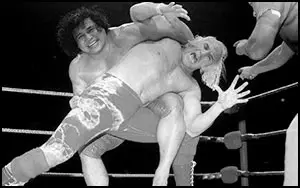 Following an angle in which the flamboyant and controversial champion perpetrated a vicious sneak-attack on the popular islander, crushing his own ukulele over the unsuspecting fan favorite’s head, bloodying and temporarily rendering Maivia unconscious. An enraged High Chief demanded a showdown with The Superstar and on November 21, 1977, Peter Maivia and Billy Graham met at New York’s Madison Square Garden, with The Superstar’s WWWF Heavyweight championship on the line. His match with Graham was Maivia’s first time headlining The Garden and although the powerful Samoan did not walk out of the famed arena as the new champion, he and Graham’s stellar performance resulted in one of the most dramatic, exciting WWWF title matches of the era, one that did much in terms of raising Maivia’s stock in the eyes of Northeastern wrestling fans, who had been familiar with the tattooed Samoan warrior for a relatively short amount of time.
Following an angle in which the flamboyant and controversial champion perpetrated a vicious sneak-attack on the popular islander, crushing his own ukulele over the unsuspecting fan favorite’s head, bloodying and temporarily rendering Maivia unconscious. An enraged High Chief demanded a showdown with The Superstar and on November 21, 1977, Peter Maivia and Billy Graham met at New York’s Madison Square Garden, with The Superstar’s WWWF Heavyweight championship on the line. His match with Graham was Maivia’s first time headlining The Garden and although the powerful Samoan did not walk out of the famed arena as the new champion, he and Graham’s stellar performance resulted in one of the most dramatic, exciting WWWF title matches of the era, one that did much in terms of raising Maivia’s stock in the eyes of Northeastern wrestling fans, who had been familiar with the tattooed Samoan warrior for a relatively short amount of time.
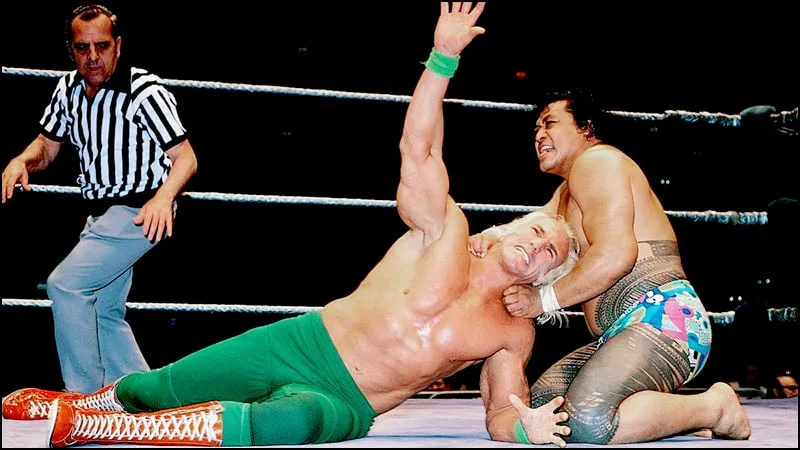
When Graham lost his prized championship to Bob Backlund in February of 1978, the promotion went on to create a shocking angle in which Maivia, a career-long fan favorite, turned heel on the young champion and their shared manager, Arnold Skaaland. After violently betraying the new WWWF champion, Maivia was scheduled to once again wrestle in the main event at Madison Square Garden, exactly 366 days since his last M.S.G. title match.
A great deal had changed in the year since Maivia faced Graham and, against Backlund, he was clearly not the fan favorite. Despite the fact that he was performing as a heel for the first time in his career, Maivia quickly adapted himself to the new role. With their wild and bloody first encounter concluding in an indecisive outcome, another Backlund-Maivia title match was scheduled for The Garden the following month. However, that match also ended without a pinfall victory, so a third & final match was booked for the WWWF’s December M.S.G. card, this one to be held within a fifteen-foot high steel cage. Following twenty minutes of bloody, brutal ring action, Backlund finally defeated the treacherous Samoan, ending their feud in dramatic fashion. Following his lengthy program with Backlund, the now-hated High Chief (who had enlisted the aid of manager “Classy” Fred Blassie) remained a high-profile member of the World Wide Wrestling Federation talent roster. Yet, during the last two years of the decade, Maivia also made frequent trips back to New Zealand, where he remained one of the most popular wrestlers that the NWA’s New Zealand office had ever booked and, during this territorial era, the versatile Maivia simultaneously portrayed a loathsome heel in America and the most noble of heroes when competing “Down Under.” In 1978, the gifted Samoan captured the NWA British Empire/Commonwealth Heavyweight title and held the regional championship until losing to the hated Mr. Fuji in August of 1979. Meanwhile, back in the States, Maivia eventually left the WWWF after a stellar run and returned to the NWA’s Hawaiian territory, not only as a main-event (and, once again, a babyface) wrestler, but, unbeknownst to the fanbase, as the new owner of the Alliance’s Hawaiian promotion.
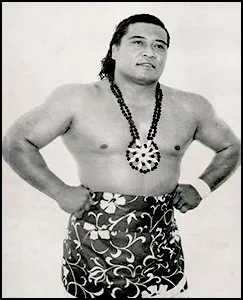 When Maivia bought the promotion in 1980, the NWA’s Hawaiian territory, which had (for obvious reasons) always been a much sought-after assignment for most wrestlers was, nevertheless, one of the smallest members of the Alliance. Yet the promotion, which had seen more than it’s share of peaks and valleys in terms of both popularity and profitability, once again began to thrive under the strong, new leadership of Maivia. As one of the most famous athletes ever to come out of the South Pacific, it would’ve been natural for the beloved High Chief to win many championships upon his return. However, as the owner of the territory, Maivia felt it was best if other wrestlers competed over the region’s title belts while he lessened his role, at least in terms of holding championships. As a result, Maivia held won just a single title, the Hawaiian Heavyweight championship, while he owned the territory, and the legendary Samoan dropped the belt to Hans Schroeder just one week after winning it from Ripper Collins.
When Maivia bought the promotion in 1980, the NWA’s Hawaiian territory, which had (for obvious reasons) always been a much sought-after assignment for most wrestlers was, nevertheless, one of the smallest members of the Alliance. Yet the promotion, which had seen more than it’s share of peaks and valleys in terms of both popularity and profitability, once again began to thrive under the strong, new leadership of Maivia. As one of the most famous athletes ever to come out of the South Pacific, it would’ve been natural for the beloved High Chief to win many championships upon his return. However, as the owner of the territory, Maivia felt it was best if other wrestlers competed over the region’s title belts while he lessened his role, at least in terms of holding championships. As a result, Maivia held won just a single title, the Hawaiian Heavyweight championship, while he owned the territory, and the legendary Samoan dropped the belt to Hans Schroeder just one week after winning it from Ripper Collins.
At the same time he was running the Hawaiian territory, the High Chief took bookings with other groups, most notably the NWA’s Los Angeles promotion. Once again performing as a heel, Maivia’s winning ways continued when he captured the region’s top prize, the Americas Heavyweight title, by defeating Rick Davidson in March of 1981. Although he held the belt for three full months, the most notable event to come from his early-Eighties run in Los Angeles was not his reign as the Americas champion, but his bitter, gruesome feud with the rulebreaking Samoan’s former protégé Victor Rivera. Rivera had previously been one of L.A.’s most controversial heels and an ally of Maivia’s. However, when the Puerto Rican star began receiving the cheers of the fans, The High Chief took exception and began what would turn out to be one of the most violent feuds ever to take place in the LaBell’s Los Angeles-based promotion.
However, late in 1981, Maivia, always known for keeping himself in great condition physically, became quite ill after years of ignoring tell-tale symptoms and refusing to see a medical doctor when urged by his family and/or co-workers. By the time he finally did seek medical attention in early 1982, it was too late; cancer had spread throughout Maivia’s entire body. When he passed away, though, High Chief Peter Maivia left behind a legacy that is virtually unparalleled in wrestling history. Of course, his wife Ata continued to promote the Hawaiian territory, with great success, from 1982 through 1988. Following Peter’s death, Ata Maivia was even elected Vice President of the National Wrestling Alliance, the first and only female to ever hold the lofty position.
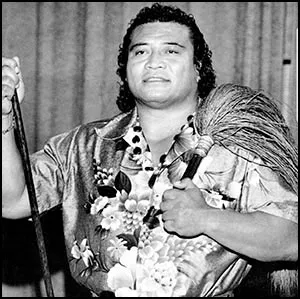 Meanwhile, as the patriarch of what is perhaps the most prolific and successful of all of wrestling’s dynasty’s, the Samoan wrestling family, High Chief Peter Maivia set the stage for essentially every island wrestler who followed him. Forever owing Maivia a debt of gratitude are men (and, in most cases, relatives) like the Wild Samoans, Jimmy “Superfly” Snuka, Yokozuna, the Samoan Swat Team of Samu & Fatu (Rikishi), Meng/Haku, The Tonga Kid, Umaga, The Usos, Roman Reigns and many other Polynesian wrestling superstars who followed in the High Chief’s footsteps.
Meanwhile, as the patriarch of what is perhaps the most prolific and successful of all of wrestling’s dynasty’s, the Samoan wrestling family, High Chief Peter Maivia set the stage for essentially every island wrestler who followed him. Forever owing Maivia a debt of gratitude are men (and, in most cases, relatives) like the Wild Samoans, Jimmy “Superfly” Snuka, Yokozuna, the Samoan Swat Team of Samu & Fatu (Rikishi), Meng/Haku, The Tonga Kid, Umaga, The Usos, Roman Reigns and many other Polynesian wrestling superstars who followed in the High Chief’s footsteps.
Peter Maivia is a member of the WWE Hall of Fame (2008) and the Professional Wrestling Hall of Fame (2016).
High Chief Peter Maivia passed away on June 13, 1982 at the age of 45.
by Stephen Von Slagle
Born in Detroit, Michigan, on August 27, 1948, the man who would eventually go on to worldwide fame as Sergeant Slaughter, Bob Remus, grew up in Eden Prairie, Minnesota. Excelling at both wrestling and football during his high school years, Remus began his professional wrestling career in 1972, after completing his training with Minnesota legend Verne Gagne. Originally competing in the Vancouver territory as “Beautiful” Bobby Remus, he adopted a very flamboyant persona, sporting blond hair and wearing tie-dye clothing, ala “Superstar” Billy Graham. However, without the exceptional body nor the superlative promo skills of The Superstar, “Beautiful” Bobby Remus came across as a somewhat weak copy of Graham, which is essentially what the character was. Wisely, he soon decided to alter his gimmick, discarding his colorful wardrobe and, after briefly competing simply as Bob Remus, replaced both personas with something quite different and far more original.
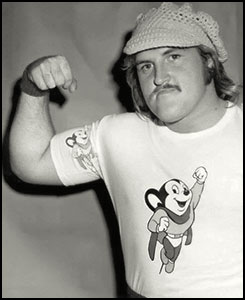 After his short stay in Gene Kiniski’s Vancouver territory, and, later, Don Owens’ Portland league, Bob Remus moved on, making his debut in two different, yet very similar promotions. First, Leroy McGuirk’s Tulsa-based Tri-State Wrestling, where he quickly became a co-holder of the NWA United States Tag Team title with partner Col. Buck Robely early in 1976. At the same time, Slaughter began wrestling in the Central States promotion, under the name D.I. Bob Slaughter. Soon after entering the Kansas City-based group, the Drill Instructor cut back on his Tri-State commitments and joined the Central States promotion full-time. Although he was still basically a rookie in the business, the talented 6’5″ 300 lb. Slaughter quickly acclimated himself, impressing both fans and management with his size & speed as well as a solid grasp of wrestling fundamentals and ring psychology. However, even more than the big man’s ring ability, Remus’ new gimmick enabled him to become a main-event level star in the rugged Central States promotion almost immediately. While it was not necessarily one of the NWA’s more profitable or widely viewed territories, history has proven that Bob Geigel’s no-frills Central States promotion was one of the best places for a young performer to learn his craft before moving on to bigger and better things. Future superstars such as Slaughter, Dusty Rhodes, Jesse Ventura, Ted Dibiase, and Crusher Blackwell (among many others) all began their careers with tours in the Central States promotion where, despite their lack of time in the business, they were able to receive valuable ring experience while wrestling in matches at the top of the card.
After his short stay in Gene Kiniski’s Vancouver territory, and, later, Don Owens’ Portland league, Bob Remus moved on, making his debut in two different, yet very similar promotions. First, Leroy McGuirk’s Tulsa-based Tri-State Wrestling, where he quickly became a co-holder of the NWA United States Tag Team title with partner Col. Buck Robely early in 1976. At the same time, Slaughter began wrestling in the Central States promotion, under the name D.I. Bob Slaughter. Soon after entering the Kansas City-based group, the Drill Instructor cut back on his Tri-State commitments and joined the Central States promotion full-time. Although he was still basically a rookie in the business, the talented 6’5″ 300 lb. Slaughter quickly acclimated himself, impressing both fans and management with his size & speed as well as a solid grasp of wrestling fundamentals and ring psychology. However, even more than the big man’s ring ability, Remus’ new gimmick enabled him to become a main-event level star in the rugged Central States promotion almost immediately. While it was not necessarily one of the NWA’s more profitable or widely viewed territories, history has proven that Bob Geigel’s no-frills Central States promotion was one of the best places for a young performer to learn his craft before moving on to bigger and better things. Future superstars such as Slaughter, Dusty Rhodes, Jesse Ventura, Ted Dibiase, and Crusher Blackwell (among many others) all began their careers with tours in the Central States promotion where, despite their lack of time in the business, they were able to receive valuable ring experience while wrestling in matches at the top of the card.
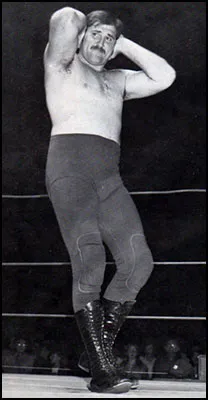 Portraying a former marine Drill Instructor who was dishonorably discharged from the service because of his penchant for brutalizing young recruits, D.I. Bob Slaughter was a truly imposing figure within the Midwestern promotion and a very unique, innovative character at that time in pro wrestling. Although the sport had featured a few military-type wrestlers in the past, they were invariably portrayed as evil foreigners, certainly not an American, let alone one who was a heel. However, there were few villains as ruthless, sadistic or brutal as D.I. Bob Slaughter. Soon after his arrival, the growling, stone-jawed D.I. established himself as the number one heel in the Central States territory and he feuded with a number of the region’s top fan favorites of the day, including Mike George, Ted Oates, “Bulldog” Bob Brown and Rufus R. Jones. After plowing his way to the top of the card, Slaughter’s hard work and professionalism was rewarded with a victory in January of 1977 for the region’s biggest prize, the Central States Heavyweight title. The intimidating, rule-breaking former Marine defended his new championship frequently, using any means necessary to hold on to his coveted title. Yet, as was customary during this period, his reign as a regional titleholder did not last particularly long and on February 4, 1977, Slaughter was defeated by the popular Ted Oates in St. Joseph, Missouri for the Central States Heavyweight championship. However, the title loss was simply a means to advance his storyline with Oates, and a week later the D.I. regained his Central States championship, once again in St. Joseph. From there, the merciless Slaughter began a program with “Bulldog” Bob Brown, who was a fixture of the Midwestern promotion.
Portraying a former marine Drill Instructor who was dishonorably discharged from the service because of his penchant for brutalizing young recruits, D.I. Bob Slaughter was a truly imposing figure within the Midwestern promotion and a very unique, innovative character at that time in pro wrestling. Although the sport had featured a few military-type wrestlers in the past, they were invariably portrayed as evil foreigners, certainly not an American, let alone one who was a heel. However, there were few villains as ruthless, sadistic or brutal as D.I. Bob Slaughter. Soon after his arrival, the growling, stone-jawed D.I. established himself as the number one heel in the Central States territory and he feuded with a number of the region’s top fan favorites of the day, including Mike George, Ted Oates, “Bulldog” Bob Brown and Rufus R. Jones. After plowing his way to the top of the card, Slaughter’s hard work and professionalism was rewarded with a victory in January of 1977 for the region’s biggest prize, the Central States Heavyweight title. The intimidating, rule-breaking former Marine defended his new championship frequently, using any means necessary to hold on to his coveted title. Yet, as was customary during this period, his reign as a regional titleholder did not last particularly long and on February 4, 1977, Slaughter was defeated by the popular Ted Oates in St. Joseph, Missouri for the Central States Heavyweight championship. However, the title loss was simply a means to advance his storyline with Oates, and a week later the D.I. regained his Central States championship, once again in St. Joseph. From there, the merciless Slaughter began a program with “Bulldog” Bob Brown, who was a fixture of the Midwestern promotion.
After months of heated nightly battles in Central States cities such as Des Moines, Kansas City, Wichita and St. Joseph, Brown was eventually able to defeat Slaughter for the title. However, as was the case when he dropped the championship to Ted Oates, Slaughter soon regained his Central States title (for the third time) by defeating Brown in a rematch just a few weeks later. It was also during this time period that Remus developed the idea of having a top babyface encourage the fans to call him “Gomer” (in reference to the bumbling, moronic Marine portrayed by Jim Neighbors on TV’s Gomer Pyle, U.S.M.C.). Once the fans began their chant of “Gom-er! Gom-er!” Slaughter would then become red-faced with anger, covering his ears and refusing to continue with the match until the antagonistic audience settled down, which, of course, was never the case. The interactive, fan-friendly “Gomer gimmick” worked extremely well for Slaughter, who went on to use it (with great success) at one point or another in virtually every promotion he worked for from that point forward. After several more months as the Central States champion, D.I. Bob Slaughter’s reign on top of the territory finally came to an end when he lost the title to another fast-rising star, the popular young Ted Dibiase, on May 19, 1977 in Kansas City, Kansas. Although he was granted several rematches against the rookie second-generation star, Slaughter was unable to regain his Central States championship from the talented young Dibiase and a few months after dropping the title, the massive D.I. Bob Slaughter dropped out of not only the Central States promotion, but the wrestling scene altogether.
 At the same time in the American Wrestling Association, a gigantic new six-five, three hundred pound masked man by the name of Super Destroyer Mark II suddenly appeared in the promotion under the tutelage of the despised Englishman, Lord Alfred Hayes. The dangerous new masked man carried on in the tradition of the original Super Destroyer (Don Jardine a.k.a. The Spoiler) who was previously managed by Hayes in the AWA, and immediately upon his arrival, Super Destroyer Mark II became deeply involved in the snobbish manager’s ongoing feud with The Crusher. Lord Hayes’ mysterious and powerful new protégé, who was billed as hailing from Gibraltar, posed a very serious threat to “The Wrestler Who Made Milwaukee Famous” as well as several other top AWA competitors, including the popular Greg Gagne and the English shooter Billy Robinson. In fact, it was against Robinson that Super Destroyer Mark II won his sole AWA championship, the AWA British Empire title, on September 25, 1979 in Winnipeg, Manitoba. During his time in the promotion, the silent, hulking Super Destroyer, led by the elitist Lord Hayes, was a rulebreaking force like few others in the American Wrestling Association. But, after betraying his manager Alfred Hayes (who then became a popular babyface) and joining Bobby Heenan’s stable, the monolithic Super Destroyer was eventually unmasked and soon faded from the AWA territory.
At the same time in the American Wrestling Association, a gigantic new six-five, three hundred pound masked man by the name of Super Destroyer Mark II suddenly appeared in the promotion under the tutelage of the despised Englishman, Lord Alfred Hayes. The dangerous new masked man carried on in the tradition of the original Super Destroyer (Don Jardine a.k.a. The Spoiler) who was previously managed by Hayes in the AWA, and immediately upon his arrival, Super Destroyer Mark II became deeply involved in the snobbish manager’s ongoing feud with The Crusher. Lord Hayes’ mysterious and powerful new protégé, who was billed as hailing from Gibraltar, posed a very serious threat to “The Wrestler Who Made Milwaukee Famous” as well as several other top AWA competitors, including the popular Greg Gagne and the English shooter Billy Robinson. In fact, it was against Robinson that Super Destroyer Mark II won his sole AWA championship, the AWA British Empire title, on September 25, 1979 in Winnipeg, Manitoba. During his time in the promotion, the silent, hulking Super Destroyer, led by the elitist Lord Hayes, was a rulebreaking force like few others in the American Wrestling Association. But, after betraying his manager Alfred Hayes (who then became a popular babyface) and joining Bobby Heenan’s stable, the monolithic Super Destroyer was eventually unmasked and soon faded from the AWA territory.
Not long after the departure of Super Destroyer Mark II, a relative unknown by the name of Sgt. Slaughter suddenly appeared in the WWF, under the tutelage of the devious Grand Wizard of Wrestling. The impressive but “unproven” military man quickly rose not only to the occasion, but also to the top of the promotion’s rankings. No longer a Drill Instructor, the newly renamed Sergeant Slaughter posed a genuinely serious threat to Bob Backlund’s WWF Heavyweight title and their wild matches throughout the territory, including New York’s Madison Square Garden, always took place before capacity crowds. After making a huge impression on northeastern fans during his exciting (albeit relatively brief) first run in the WWF, the ruthless Sgt. Slaughter entered yet another red-hot territory, Jim Crockett’s Mid-Atlantic Wrestling promotion. Soon after entering the territory, Slaughter (with an impressive offensive arsenal that included his feared Cobra Clutch sleeper-hold and the devastating Slaughter Cannon, which was a flying clothesline from the second turnbuckle) defeated the most popular “puke” in the region at that time, Rick Steamboat, in the finals of a tournament to decide the new NWA United States Heavyweight champion.
 As the reigning United States Heavyweight champion, Sgt. Slaughter took on the best that the Mid-Atlantic had to offer, including challenges from top names like Steamboat, Jack Brisco and Roddy Piper. However, it was against the rugged former NFL star Wahoo McDaniel that Slaughter finally lost his prized championship, after holding the prestigious title for over a half-year. With the previously mentioned “Gomer Gimmick” once again in full effect, Slaughter and Wahoo entered into a very intense, bloody and profitable feud with one another and the “hatred” between the two only intensified with McDaniel’s victory over the detested Sergeant. Slaughter would gain his revenge, though, when the NWA stripped McDaniel of the U.S. title following an “injury” that took the popular Native American out of action for several weeks. To Slaughter’s delight, and the fans’ dismay, the NWA awarded the title to the previous champion, Sgt. Slaughter, on June 7, 1982. Yet, there was more to be written in the story of Slaughter vs. McDaniel, and on August 22, 1982, a recuperated Wahoo pinned his hated rival in Charlotte, North Carolina. to regain the coveted United States championship. Within weeks, though, Sgt. Slaughter was back in the title picture, this time with Pvt. Don Kernodle, with whom he won the NWA World Tag Team championship in September of 1982. With the overbearing Sergeant constantly barking orders at his eager young recruit, the entertaining heel duo went on to rule Mid Atlantic’s tag team division for more than seven months. During this time, the villainous duo began a heated feud with the most popular babyface team in the area, Rick Steamboat & Jay Youngblood. The two teams waged war against each other in a red-hot program for months before Slaughter and Kernodle were finally dethroned by Steamboat and Youngblood, inside of a steel cage, on March 12, 1983. Meanwhile, the NWA’s Toronto office, which was operated by Jack Tunney, had a very close working relationship with the Mid-Atlantic territory in the years prior to Tunney’s group joining the WWF in the Summer of 1984. As a result, Toronto was a regular stop for the Mid-Atlantic’s top stars, Slaughter included, and on July 24, 1983, Sgt. Slaughter continued his winning ways by defeating the massive Angelo “King Kong” Mosca for the NWA Canadian Heavyweight championship in Toronto. The pair of three hundred pounders went on to feud with each other for the remainder of 1983 before Mosca was finally able to dethrone Slaughter and regain the Canadian championship. The title switch marked a period of change for Sgt. Slaughter, who, soon after dropping the title to Mosca, left the NWA to return to the World Wrestling Federation.
As the reigning United States Heavyweight champion, Sgt. Slaughter took on the best that the Mid-Atlantic had to offer, including challenges from top names like Steamboat, Jack Brisco and Roddy Piper. However, it was against the rugged former NFL star Wahoo McDaniel that Slaughter finally lost his prized championship, after holding the prestigious title for over a half-year. With the previously mentioned “Gomer Gimmick” once again in full effect, Slaughter and Wahoo entered into a very intense, bloody and profitable feud with one another and the “hatred” between the two only intensified with McDaniel’s victory over the detested Sergeant. Slaughter would gain his revenge, though, when the NWA stripped McDaniel of the U.S. title following an “injury” that took the popular Native American out of action for several weeks. To Slaughter’s delight, and the fans’ dismay, the NWA awarded the title to the previous champion, Sgt. Slaughter, on June 7, 1982. Yet, there was more to be written in the story of Slaughter vs. McDaniel, and on August 22, 1982, a recuperated Wahoo pinned his hated rival in Charlotte, North Carolina. to regain the coveted United States championship. Within weeks, though, Sgt. Slaughter was back in the title picture, this time with Pvt. Don Kernodle, with whom he won the NWA World Tag Team championship in September of 1982. With the overbearing Sergeant constantly barking orders at his eager young recruit, the entertaining heel duo went on to rule Mid Atlantic’s tag team division for more than seven months. During this time, the villainous duo began a heated feud with the most popular babyface team in the area, Rick Steamboat & Jay Youngblood. The two teams waged war against each other in a red-hot program for months before Slaughter and Kernodle were finally dethroned by Steamboat and Youngblood, inside of a steel cage, on March 12, 1983. Meanwhile, the NWA’s Toronto office, which was operated by Jack Tunney, had a very close working relationship with the Mid-Atlantic territory in the years prior to Tunney’s group joining the WWF in the Summer of 1984. As a result, Toronto was a regular stop for the Mid-Atlantic’s top stars, Slaughter included, and on July 24, 1983, Sgt. Slaughter continued his winning ways by defeating the massive Angelo “King Kong” Mosca for the NWA Canadian Heavyweight championship in Toronto. The pair of three hundred pounders went on to feud with each other for the remainder of 1983 before Mosca was finally able to dethrone Slaughter and regain the Canadian championship. The title switch marked a period of change for Sgt. Slaughter, who, soon after dropping the title to Mosca, left the NWA to return to the World Wrestling Federation.
Back in the WWF, Slaughter picked up right where he’d left off a couple of years earlier, under the watchful eye of his manager, The Grand Wizard of Wrestling. Slaughter took on the top fan favorites of the day while further alienating himself from the Federation’s substantial audience by referring to them as “maggots” and “pukes.” Meanwhile, he resumed his feud with WWF champion Bob Backlund, selling out Madison Square twice more for his matches against “The All American Boy.” Soon after his re-entry into the Federation, Slaughter & The Wizard also began offering $5,000 to any wrestler who could break free of the dreaded Cobra Clutch sleeper hold within a ninety-second time period. Despite the fact that many wrestlers (including several popular young up-and-comers, such as “Quick Draw” Rick McGraw and Rick Martel, among others) lined up in order to collect an “easy” five grand from Slaughter, week after week, the incredibly aggressive, borderline-psychotic former Marine’s feared maneuver proved to be virtually inescapable once The Sarge had it locked on properly. Furthermore, rather than simply prove that his hold was as unbreakable as he claimed, Slaughter would often continue on past the allotted ninety-second mark, intentionally rendering his victims unconscious with the Cobra Clutch and then sadistically battering them with impunity.
 The lengthy, ongoing angle came to a head when, following one of Slaughter’s “Cobra Clutch Challenge” segments on WWF All Star Wrestling, an arrogant and confrontational Slaughter (egged on by the scheming Grand Wizard) insulted commentator Pat Patterson, who was interviewing the hated duo at ringside, amidst a deafening chant of “Go-mer!” Calling him “a yellow maggot coward,” Slaughter then sucker-punched the retired Patterson with a stiff right hand to the jaw. As the fans in attendance continued to verbally provoke Slaughter, Patterson, who was more enraged than physically hurt, tore his suitcoat off and climbed into the ring, demanding that Slaughter apply his “unbreakable” hold. After consulting The Wizard, a cautious Sgt. Slaughter climbed through the ropes, stood behind Patterson (who was seated in a chair that had been placed in the middle of the ring) and then quickly slapped on the Cobra Clutch. Patterson was prepared, though, and in short order the gifted veteran came very close to breaking the hold several times. Finally, after stunning the big man by slamming him backwards into the corner of the ring, he was able to loosen Slaughter’s grip and it appeared that Patterson was just seconds away from totally breaking free from The Cobra Clutch. Realizing that he was about to lose not only his $5,000 but also his pride, Slaughter released the hold and viciously attacked Patterson, bloodying him with a folding chair and then clamping the Cobra back on his helpless victim. With blood flowing freely down the side of Patterson’s face, Slaughter squeezed with all of his might as he rendered the retired legend unconscious. Eventually, several wrestlers came to Patterson’s aid, however, the damage had been done…and the Slaughter-Patterson war was definitely on.
The lengthy, ongoing angle came to a head when, following one of Slaughter’s “Cobra Clutch Challenge” segments on WWF All Star Wrestling, an arrogant and confrontational Slaughter (egged on by the scheming Grand Wizard) insulted commentator Pat Patterson, who was interviewing the hated duo at ringside, amidst a deafening chant of “Go-mer!” Calling him “a yellow maggot coward,” Slaughter then sucker-punched the retired Patterson with a stiff right hand to the jaw. As the fans in attendance continued to verbally provoke Slaughter, Patterson, who was more enraged than physically hurt, tore his suitcoat off and climbed into the ring, demanding that Slaughter apply his “unbreakable” hold. After consulting The Wizard, a cautious Sgt. Slaughter climbed through the ropes, stood behind Patterson (who was seated in a chair that had been placed in the middle of the ring) and then quickly slapped on the Cobra Clutch. Patterson was prepared, though, and in short order the gifted veteran came very close to breaking the hold several times. Finally, after stunning the big man by slamming him backwards into the corner of the ring, he was able to loosen Slaughter’s grip and it appeared that Patterson was just seconds away from totally breaking free from The Cobra Clutch. Realizing that he was about to lose not only his $5,000 but also his pride, Slaughter released the hold and viciously attacked Patterson, bloodying him with a folding chair and then clamping the Cobra back on his helpless victim. With blood flowing freely down the side of Patterson’s face, Slaughter squeezed with all of his might as he rendered the retired legend unconscious. Eventually, several wrestlers came to Patterson’s aid, however, the damage had been done…and the Slaughter-Patterson war was definitely on.
Over the course of the next several weeks, Slaughter and Patterson battled in major arenas throughout the WWF, and their feud (which carried more fan interest than any other program in the territory at the time, including that of the Heavyweight champion Bob Backlund) intensified with each bloody encounter. Finally, their mutual animosity grew to the point where something had to be done in order to put an end to the ever-escalating level of violence and hatred. That “something” came in the form of a come-as-you-are, no DQ, no time limit, no count-out, feud-ending “Boot Camp Match.” It was during this time period that Vince McMahon, Jr. began to take his World Wrestling Federation national, and the first choice on his list to lead the promotion as the new, post-Backlund WWF champion was none other than Sgt. Slaughter. Seeing the potential in a babyface version of The Sarge, McMahon set about transforming Slaughter from the most despised man in the Federation to the most popular.
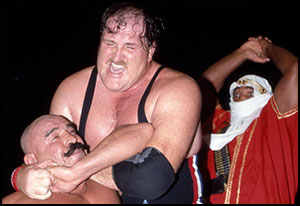 The catalyst of the hated patriot’s unlikely metamorphosis came in the form of the Iranian heel known worldwide as the Iron Sheik, who was nearly as unpopular with the fans as Sgt. Slaughter had been. The angle was kicked off when the Sheik, who had remained in the ring after a match, arguing with anti-Iranian fans, finally headed back to the dressing room area. As he walked down the aisle to return backstage, Sgt. Slaughter was simultaneously coming down to the ring for his upcoming bout. With a sense of tension thick in the air, the two natural enemies slowed and then stopped as they came to each other, engaging in a lengthy stare down while the audience in attendance instantaneously rallied behind the heretofore despised Sgt. Slaughter. Before the situation could escalate any further, several referees (as well as The Sheik’s manager, Fred Blassie) stepped between the two, and The Sheik continued to the back while Slaughter entered the ring for his match. The next week, however, Slaughter and The Sheik had another confrontation which quickly became very violent, with the unscrupulous Sheik temporarily getting the best of Slaughter. At the same time, the unlikely popularity of Sgt. Slaughter grew to unforeseen (even by McMahon) levels almost overnight, and the rugged superpatriot soon became, by far, the most popular wrestler in the WWF and, by extension, the entire country. In the meantime, however, the opportunity arose for McMahon to sign Hulk Hogan away from the AWA, and the rest, as they say, is history.
The catalyst of the hated patriot’s unlikely metamorphosis came in the form of the Iranian heel known worldwide as the Iron Sheik, who was nearly as unpopular with the fans as Sgt. Slaughter had been. The angle was kicked off when the Sheik, who had remained in the ring after a match, arguing with anti-Iranian fans, finally headed back to the dressing room area. As he walked down the aisle to return backstage, Sgt. Slaughter was simultaneously coming down to the ring for his upcoming bout. With a sense of tension thick in the air, the two natural enemies slowed and then stopped as they came to each other, engaging in a lengthy stare down while the audience in attendance instantaneously rallied behind the heretofore despised Sgt. Slaughter. Before the situation could escalate any further, several referees (as well as The Sheik’s manager, Fred Blassie) stepped between the two, and The Sheik continued to the back while Slaughter entered the ring for his match. The next week, however, Slaughter and The Sheik had another confrontation which quickly became very violent, with the unscrupulous Sheik temporarily getting the best of Slaughter. At the same time, the unlikely popularity of Sgt. Slaughter grew to unforeseen (even by McMahon) levels almost overnight, and the rugged superpatriot soon became, by far, the most popular wrestler in the WWF and, by extension, the entire country. In the meantime, however, the opportunity arose for McMahon to sign Hulk Hogan away from the AWA, and the rest, as they say, is history.
Following the arrival of Hogan and the rise of Hulk-a-Mania, Sgt. Slaughter remained in the promotion, at least temporarily, and continued to enjoy a level of popularity that surpassed even that of the newly arrived Hulkster. Yet, feeling that McMahon had not come through on several championship promises he’d made, as well as butting heads on Slaughter’s G.I. Joe contract, Slaughter left the Federation late in 1984. Despite severing his ties with McMahon and the WWF, Bob Remus’ lucrative (and, at the time, unprecedented) deal with Marvel Comics remained intact and Sgt. Slaughter’s high-profile position as a member of the hugely popular G.I. Joe series continued, allowing his well-known likeness to remain quite visible to the large adolescent audience that Slaughter’s former employer sought so fervently. Meanwhile, to the delight of AWA owner/operator Verne Gagne (who had lost nearly all of his top wrestlers to the WWF’s relentless talent raids) the world-famous Sgt. Slaughter chose to return to the American Wrestling Association early in 1985, giving the beleaguered promotion a much needed (and very public) big-name talent acquisition.
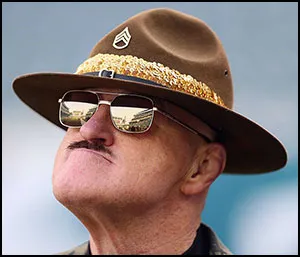 Upon entering the promotion, Slaughter was billed as the first (and only) AWA Americas titleholder, which was a championship prop created exclusively for Sgt. Slaughter while the AWA’s other top babyface, Rick Martel, continued to hold the World championship. Not surprisingly, the famous patriot immediately engaged in several high-profile feuds with some of the biggest, baddest, anti-American heels in the company… The Sarge was drawn into a natural rivalry with the massive Communist bulldozer Boris Zhukov, as well as his hated Iraqi manager, Sheik Adnan Al-Kassie. Additionally, Slaughter became involved in a bitter feud with the controversial South African bigot, Col. DeBeers. Later, once “The Living Legend” Larry Zbyszko had captured the AWA World Heavyweight title, he was forced to grant frequent title shots to his number one contender, the hugely popular Americas champion, Sgt. Slaughter. The controversial new AWA World champion’s hands were more than full with the challenge of the mighty Sgt. Slaughter and after several face-offs (each time barely escaping with his title reign intact) Zbyszko finally lost his World championship to the ultra-popular national hero. As the the live audience exploded in cheers for the beloved new champion, Slaughter returned to the locker room with the AWA World championship belt firmly locked around his waist. However, as was often the case with the AWA, Sgt. Slaughter’s well-received title victory was reversed the very next week due to a “technicality,” an overused booking practice that greatly contributed to the promotion’s previously unthinkable downfall just a few years later. Despite Slaughter’s protests, the A,W,A, World championship belt was returned to “The Living Legend.” Although he made several more subsequent trips to “Larryland,” the massive patriot was never again able to defeat Zbyszko for the AWA World title. For the better part of five years, Sgt. Slaughter was a major player within the American Wrestling Association, and in addition to being one of the few draws on the AWA’s ESPN wrestling program, the popular big man took part in several of the various AWA supercards and closed-circuit events, including, among others, WrestleRock `86 and the three SuperClash cards. However, late in 1989, Slaughter left the beleaguered AWA and moved on to other challenges, including a brief run with the short-lived A.W.F. promotion, as well as a few other smaller independent groups. Then, in 1990, Bob Remus finally received the phone call that he felt had been coming his way for more than half a decade…
Upon entering the promotion, Slaughter was billed as the first (and only) AWA Americas titleholder, which was a championship prop created exclusively for Sgt. Slaughter while the AWA’s other top babyface, Rick Martel, continued to hold the World championship. Not surprisingly, the famous patriot immediately engaged in several high-profile feuds with some of the biggest, baddest, anti-American heels in the company… The Sarge was drawn into a natural rivalry with the massive Communist bulldozer Boris Zhukov, as well as his hated Iraqi manager, Sheik Adnan Al-Kassie. Additionally, Slaughter became involved in a bitter feud with the controversial South African bigot, Col. DeBeers. Later, once “The Living Legend” Larry Zbyszko had captured the AWA World Heavyweight title, he was forced to grant frequent title shots to his number one contender, the hugely popular Americas champion, Sgt. Slaughter. The controversial new AWA World champion’s hands were more than full with the challenge of the mighty Sgt. Slaughter and after several face-offs (each time barely escaping with his title reign intact) Zbyszko finally lost his World championship to the ultra-popular national hero. As the the live audience exploded in cheers for the beloved new champion, Slaughter returned to the locker room with the AWA World championship belt firmly locked around his waist. However, as was often the case with the AWA, Sgt. Slaughter’s well-received title victory was reversed the very next week due to a “technicality,” an overused booking practice that greatly contributed to the promotion’s previously unthinkable downfall just a few years later. Despite Slaughter’s protests, the A,W,A, World championship belt was returned to “The Living Legend.” Although he made several more subsequent trips to “Larryland,” the massive patriot was never again able to defeat Zbyszko for the AWA World title. For the better part of five years, Sgt. Slaughter was a major player within the American Wrestling Association, and in addition to being one of the few draws on the AWA’s ESPN wrestling program, the popular big man took part in several of the various AWA supercards and closed-circuit events, including, among others, WrestleRock `86 and the three SuperClash cards. However, late in 1989, Slaughter left the beleaguered AWA and moved on to other challenges, including a brief run with the short-lived A.W.F. promotion, as well as a few other smaller independent groups. Then, in 1990, Bob Remus finally received the phone call that he felt had been coming his way for more than half a decade…
 Late in 1990, vignettes began running on WWF television programs that depicted Sgt. Slaughter in various combat scenarios. Clearly, this Sgt. Slaughter was not the same American hero that had been the most popular superstar in the WWF just five years earlier. Indeed, to the dismay of his legion of former fans, the deranged, sadistic, ultra right-wing Sgt. Slaughter of old was back and it became immediately apparent that no one in the WWF was safe from his misguided wrath. After making his re-debut, Slaughter bulldozed through every opponent placed before him, cheating at every opportunity and blaming the fans for “turning” on him. Eventually, he established himself the number one contender for the WWF title, which was held at the time by The Ultimate Warrior. At the 1991 installment of the Royal Rumble, Slaughter and The Warrior went one-on-one in Miami for the World Wrestling Federation championship. Unfortunate for the Ultimate Warrior, however, was the fact that the match turned out to be a two-on-one encounter when his chief rival at that time, “Macho Man” Randy Savage, ran down to ringside and interfered on Slaughter’s behalf, allowing the warped Sergeant to pin his stunned foe and become the WWF champion. Vince McMahon had finally made good on his promise.
Late in 1990, vignettes began running on WWF television programs that depicted Sgt. Slaughter in various combat scenarios. Clearly, this Sgt. Slaughter was not the same American hero that had been the most popular superstar in the WWF just five years earlier. Indeed, to the dismay of his legion of former fans, the deranged, sadistic, ultra right-wing Sgt. Slaughter of old was back and it became immediately apparent that no one in the WWF was safe from his misguided wrath. After making his re-debut, Slaughter bulldozed through every opponent placed before him, cheating at every opportunity and blaming the fans for “turning” on him. Eventually, he established himself the number one contender for the WWF title, which was held at the time by The Ultimate Warrior. At the 1991 installment of the Royal Rumble, Slaughter and The Warrior went one-on-one in Miami for the World Wrestling Federation championship. Unfortunate for the Ultimate Warrior, however, was the fact that the match turned out to be a two-on-one encounter when his chief rival at that time, “Macho Man” Randy Savage, ran down to ringside and interfered on Slaughter’s behalf, allowing the warped Sergeant to pin his stunned foe and become the WWF champion. Vince McMahon had finally made good on his promise.
The “new” Sgt. Slaughter seemed to revel in his previous heel persona, the first time he had performed in that capacity since the early-Eighties. Completely uncoincidental was the fact that Slaughter’s return and rise to the top of the WWF took place simultaneously with the escalation of the United States’ conflict with Iraq over its invasion of neighboring Kuwait. Some disagreed with the WWF for going through with a storyline that was based on actual ongoing events (featuring a traitorous anti-American as the lead character, no less) especially during a very real war in which people were dying. However, while it may not have been particularly tasteful, the abundant patriotism resultant of a war-time mentality did add a great deal of intensity to Slaughter’s reign, particularly when the turncoat patriot debuted his new Iraqi manager (and former AWA rival) Adnan Al-Kassie. The influence of Al-Kassie (who had gone from a “Sheik” to a “General”) soon became apparent when the former U.S. Marine began wearing an Iraqi military uniform to the ring. Later, Slaughter and General Adnan were joined by, of all people, the hated Iranian and former Slaughter archrival, The Iron Sheik. Granted, it was “cheap heat,” but it was also the kind of heat that was extremely effective at eliciting a visceral emotional response from the wrestling fanbase. Going into his WrestleMania VII title defense against Hulk Hogan, the negative reaction that the traitorous WWF champion consistently incited from his audience was truly substantial, if not a bit frightening.
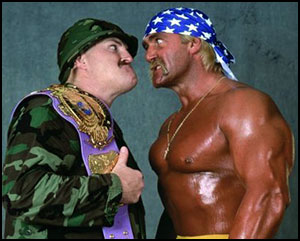 Leading up to the big event, the venue for WrestleMania VII was moved from the cavernous, 100,000 seat L.A. Coliseum to the “safer” L.A. Sports Arena. While the mainstream media seemed to accept the WWF’s explanation that the sudden venue change was due to security concerns prompted by threats of “terrorism” and not due to poor ticket sales, informed observers of the sport were less than convinced. Nevertheless, some 20,000 spectators turned out to see the most patriotic wrestler in the Federation, “The Immortal” Hulk Hogan face the despised Sgt. Slaughter for the WWF title. Although he was dominated by Slaughter for the majority of their WrestleMania showdown, a bloody and battered Hogan, the WWF’s “Real American,” battled seemingly insurmountable odds to defeat General Adnan’s champion on March 24, 1991, taking the traitorous Slaughter’s belt and returning honor to the WWF championship.
Leading up to the big event, the venue for WrestleMania VII was moved from the cavernous, 100,000 seat L.A. Coliseum to the “safer” L.A. Sports Arena. While the mainstream media seemed to accept the WWF’s explanation that the sudden venue change was due to security concerns prompted by threats of “terrorism” and not due to poor ticket sales, informed observers of the sport were less than convinced. Nevertheless, some 20,000 spectators turned out to see the most patriotic wrestler in the Federation, “The Immortal” Hulk Hogan face the despised Sgt. Slaughter for the WWF title. Although he was dominated by Slaughter for the majority of their WrestleMania showdown, a bloody and battered Hogan, the WWF’s “Real American,” battled seemingly insurmountable odds to defeat General Adnan’s champion on March 24, 1991, taking the traitorous Slaughter’s belt and returning honor to the WWF championship.
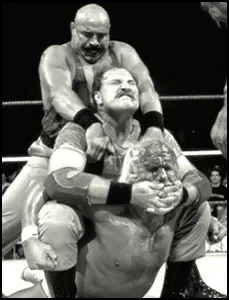 Following his loss of the WWF title to Hogan, Slaughter remained a very visible part of the Federation, and after his feud with The Hulkster concluded, he entered into another major program with the overtly patriotic (and hugely popular) “Hacksaw” Jim Duggan. However, following the controversy that resulted from the Hogan-Slaughter storyline, the WWF scaled back on some of the more provocative aspects of his character and, eventually, went so far as to turn Sgt. Slaughter into a babyface…an arduous task, indeed. Even after being betrayed and attacked by General Adnan and The Iron Sheik, the unforgiving fans were slow to embrace Slaughter. Understanding of their hesitance in accepting his apologies, a remorseful Sarge vowed to win back the fans’ trust, no matter how long it took. In the end, though, it didn’t take long at all for the icy fan reaction to Slaughter’s babyface turn to thaw, and he once again received the support of the WWF fanbase, although his popularity never again reached the incredible level achieved during his initial run as a fan favorite years earlier. After another solid run as a WWF hero, Sgt. Slaughter quietly faded from the scenes. He did not, however, fade from the WWF and after his retirement, Bob Remus stayed on with the company as a member of Titan Sports’ management team, specifically as a road agent. Then, in the late-Nineties, Sgt. Slaughter re-emerged on Federation television as the new trouble shooting, no-nonsense WWF Commissioner. As the Commish, Slaughter played an important role in the storylines of several top WWF superstars, including members of De-Generation X, “Stone Cold” Steve Austin and others before once again leaving the public eye and returning to his important duties backstage.
Following his loss of the WWF title to Hogan, Slaughter remained a very visible part of the Federation, and after his feud with The Hulkster concluded, he entered into another major program with the overtly patriotic (and hugely popular) “Hacksaw” Jim Duggan. However, following the controversy that resulted from the Hogan-Slaughter storyline, the WWF scaled back on some of the more provocative aspects of his character and, eventually, went so far as to turn Sgt. Slaughter into a babyface…an arduous task, indeed. Even after being betrayed and attacked by General Adnan and The Iron Sheik, the unforgiving fans were slow to embrace Slaughter. Understanding of their hesitance in accepting his apologies, a remorseful Sarge vowed to win back the fans’ trust, no matter how long it took. In the end, though, it didn’t take long at all for the icy fan reaction to Slaughter’s babyface turn to thaw, and he once again received the support of the WWF fanbase, although his popularity never again reached the incredible level achieved during his initial run as a fan favorite years earlier. After another solid run as a WWF hero, Sgt. Slaughter quietly faded from the scenes. He did not, however, fade from the WWF and after his retirement, Bob Remus stayed on with the company as a member of Titan Sports’ management team, specifically as a road agent. Then, in the late-Nineties, Sgt. Slaughter re-emerged on Federation television as the new trouble shooting, no-nonsense WWF Commissioner. As the Commish, Slaughter played an important role in the storylines of several top WWF superstars, including members of De-Generation X, “Stone Cold” Steve Austin and others before once again leaving the public eye and returning to his important duties backstage.
 As the new millennium was ushered in, Sgt. Slaughter remained a fixture of WWE, making occasional on-camera appearances in addition to his behind-the-scenes management duties. Then, early in 2020, controversy regarding Bob Remus’ actual military history prior to becoming a wrestler emerged. For some reason, people actually believed the he had, indeed, been a Marine earlier in life, perhaps because Remus always remained in character while doing media interviews and making public appearances. When it was “revealed” that neither Bob Remus, nor his fictional alter-ego Sgt. Slaughter, had, in fact, been a member of the armed services, accusations of “Stolen Valor” were leveled by offended parties. Clearly, rather than it being a case of maintaining a malevolent lie, Remus was simply staying true to the persona of Sgt. Slaughter when ambiguously sighting past military involvement and, eventually, the controversy blew over.
As the new millennium was ushered in, Sgt. Slaughter remained a fixture of WWE, making occasional on-camera appearances in addition to his behind-the-scenes management duties. Then, early in 2020, controversy regarding Bob Remus’ actual military history prior to becoming a wrestler emerged. For some reason, people actually believed the he had, indeed, been a Marine earlier in life, perhaps because Remus always remained in character while doing media interviews and making public appearances. When it was “revealed” that neither Bob Remus, nor his fictional alter-ego Sgt. Slaughter, had, in fact, been a member of the armed services, accusations of “Stolen Valor” were leveled by offended parties. Clearly, rather than it being a case of maintaining a malevolent lie, Remus was simply staying true to the persona of Sgt. Slaughter when ambiguously sighting past military involvement and, eventually, the controversy blew over.
Among other awards, Sgt. Slaughter received the Wrestling Observer Newsletter’s Match of the Year award in 1981 for his infamous Boot Camp match against Pat Patterson, as well as Pro Wrestling Illustrated’s Most Hated Wrestler of the Year award in 1991. Additionally, he is a member of the WWE Hall of Fame (2004), the Professional Wrestling Hall of Fame (2016) and the International Wrestling Institute & Museum’s George Tragos/Lou Thesz Professional Wrestling Hall of Fame (2019).
